The Supermarine Seafire is the naval version of the Supermarine Spitfire. A ruggerized version adapted for aircraft carrier use. It just followed the concept of the Hawker Sea Hurricane, as another, earlier navalised version of the second most popular British fighter of WW2. “Seafire” was a contraction of “Sea Spitfire” that eventually imposed itself, including officially. Being based on the most successful fighter of Great Britain, much was awaited for it in the Fleet Air Arm (FAA), but it’s weak undercarriage and short range did not contributed to its early success. But the seafire was improved over the years, especially by 1944-45. If the Mark XV and XVII were still troublesome eventually the postwar Mark 45 to 47 reached the pinnacle of the genre, contributing to its continuous service until the start of the Korean war, before being replaced by the Sea Fury, and Jets.
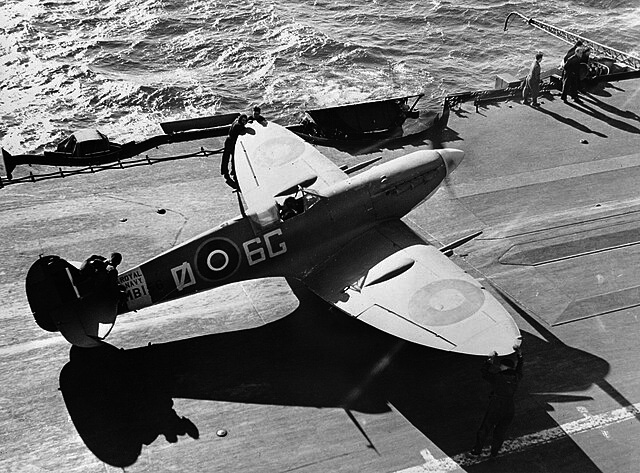
Seafire Mk IIc of No 885 Naval Air Squadron, HMS FORMIDABLE, Mediterranean, December 1942
Design Development
The long and fustrating path to a modern naval fighter
The idea of adopting a navalised Supermarine Spitfire was in the Admiralty’s mind as early as May 1938, however the RAF in dire need for the latest fighters monopolized the order, and in 1940 the question was not less urgent for the FAA. There was a pressing need to replace all types of obsolete fighters that still in operation, such as the antiquated Hawker Nimrod biplane (1932, only retired in 1942 !) and Hawker Osprey, both recce aircraft.
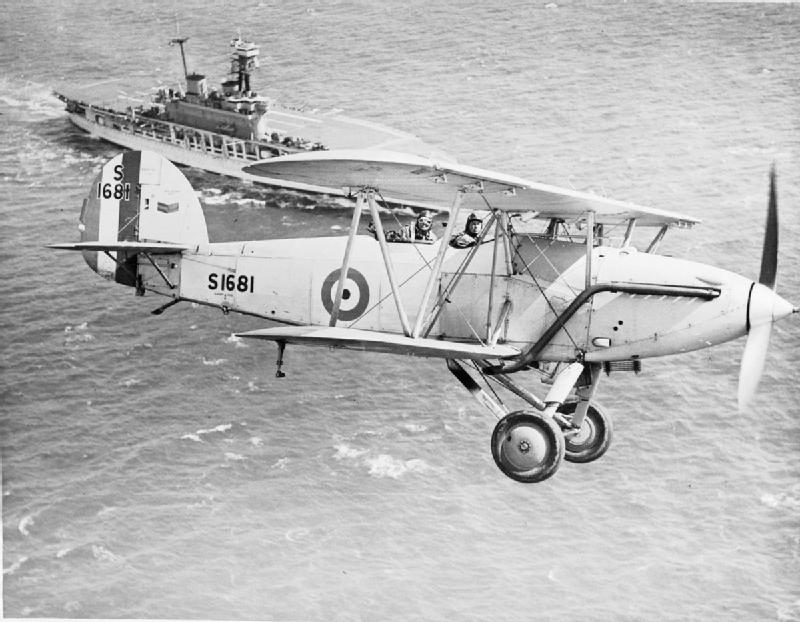
The Hawker Osprey was the naval variant of a large family derived from the Hawker Hart. A two-seater biplane light bomber aircraft that first flew on June 1928. It was so versatile as to be declined into the Audax, Demon (and TurretDemon), Hardy, Hind, and Osprey, navalised carrier-borne version of the Hart, usabled both as fighter and reconnaissance, joining the FAA in 1932, with 103 built and only retired in 1944. It was agile, but certainly not able to oppose the Me 109 in 1939.
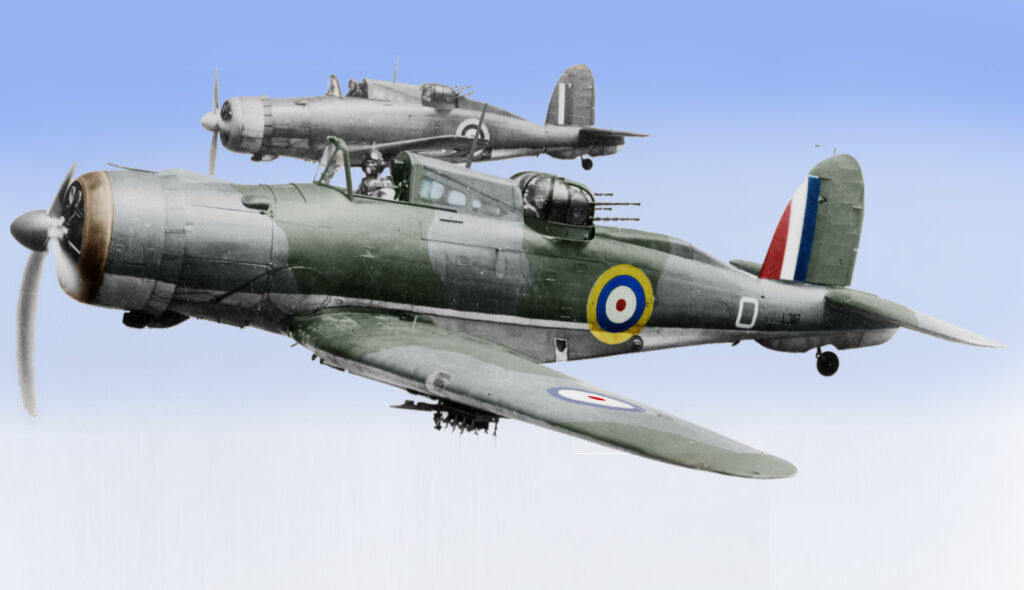
And there was the Blackburn Roc, an attempt to create a fighter based on the Blackburn Skua dive bomber, with the postulate that speed and agility mattered less than firepower comining from a 360° revolving turret. Looking good on paper, the Skua was such a disappointment it was retired soon after being introduced on carriers of the FAA.
Winston Churchill, knowing still overriding priorities preferred to favour the RAF as well and ordered to focus on land-based Spitfires only. So in 1939 the RN was to be content with the Blackburn Roc, which like its land counterpart, the Boulton-Paul Defiant, proved useless in action in 1940.
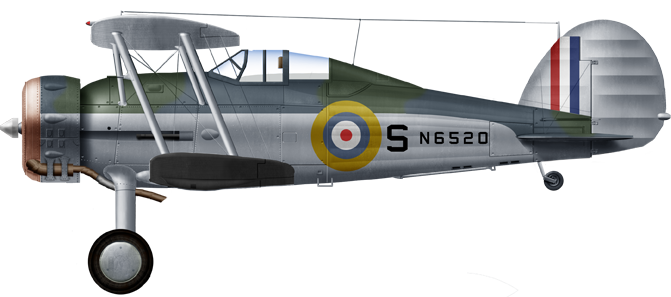
Sea Gladiator “Faith”, Flight Hal Far Fighter Squadron RAF Malta June 1940
In mid-1939, Gloster, only manufacturer not monopolized by RAF fighter orders unlike Supermarine and Hawker, proposed its own readily available Gladiator, created as a private venture in a navalized variant. A modified Mk II, the Sea Gladiator, was developed with an arrestor hook, catapult attachment points as well as a strengthened airframe and underbelly fairing to fit a small dinghy lifeboat. By default of any single-seat model, the FAA appoved the delivery of 100, later reduced to 98 aircraft either built as Sea Gladiators or converted. 54 were in service by September but gradually delivered. Among the most famous were the 18 Sea Gladiators from 802 Naval Air Squadron delivered by HMS Glorious, in early 1940 to Malta. In late 1941 the Gladiator only was good enough against Italian fighters, but became an easy prey to the Me 109E “trop”.

Fulmar from HMS Victorious during Operation Torch in 1942
In 1940 was gradually introduced the better Fairey Fulmar, not a “pure” fighter but a multirole two-seat model. It still was good enough against most aicraft but the German Me-109, until mid-1942. At least it was a moderately fast and agile monoplane fitted with the same Merlin engine shared by the “Spit” and Hurricane. But it’s own production was precisely slowed down by bottlenecks at Rolls-Royce.

Sea Hurricane from HMS Victorious during Operation Pedestal in August 1942 (801 NAS).
And in mid-1941 at last arrived the well-awaited Hawker Sea Hurricane, developed in 1941 at the demand of the FAA as the manufacturing pressure started to wave down. The RAF privileged still the Spitfire at this point, so again, the FAA could not count on it. In all, some 800 Sea Hurricane were converted or produced in several variants, used until 1945. It became in 1942 until gradually replaced by the Seafire, the most common fighter of the FAA, but still 2-3 generation late compared to its RAF counterpart, now relegated to fighter-bomber duties only.
Supermarine pressured by the FAA again in 1941
By 1941 and early 1942, the concept of a navalized spitfire was pushed again by the Admiralty, notably to the RAF staff, and it eventually bore fruit.
It was inevitable that the FAA had to have the Seafire. It was the only fighter available that would fit into the new, low-hangar-roofed Implacable and Indefatigable. There were no other British aircraft. Hawker’s Hurricane replacement — the Typhoon — was too large, the Martin-Baker MB5 was not being built and the Blackburn Firebrand had yet to fly properly. The Hurricane itself was not available in sufficient quantity and it was unlikely to be fitted with the Griffon engine or be modified to allow wing folding.
— DSC RN, Commander R ‘Mike’ Crosley: They Gave me a Seafire
Production
Culminating in an initial batch of Seafire Mk Ib fighters provided in late 1941 mainly used for pilots to gain experience due to their numerous limitations and woefully incomplete/botched conversion. A second batch was a little better, but delivered very slowly between repair and maintenance centers of the RAF, from battered/damaged second hand Mark VBs. Concerns over their weak undercarriage, unstrenghtened, barred them from carrier use execpt for a small batch as “permanent park” on three fleet carriers. Performance were also barely acceptable and degraded compared to the regular Mark VB.
From 1942 onwards, more Seafire were quickly ordered, but always converted from existing second-hand models, with the Mark II, and at last a good navalized variant which were the operationally-viable Seafire F Mk III. Only from there, the Seafire replaced the Sea Hurricane and Martlet throughout the FAA on first-line carriers. Next came more or less good versions following land-based models: The Mark III was relatively good but the serie jumped directly to the Mark XV which improved on some points, the degraded Mark 17 (which arrived too late in the war to make a difference). The very best started with Griffon engines. The Mark 46 and its 5-bladed rotor was passable, but the Mark 45-46 with contrarotating props were excellent, the best seafires ever built. Since they were were weak, lacked range and payload compared to the later Sea Fury. Only in interception they kept an edge. But compared to previous marks they had the best range, best speed overall, were the most rugged and with the best folding wings ever. Since this was postwar, they only served in 1947-1951, and proved perfect for Korea, escorting Firelies in dangerous raids. Supermarine was soon unable to produced these Marks apart in South Marston plant at low rate, and the bulk were produced by Westland making 213, Cunliffe-Own. Some were also designed and built by Folland Gnat.
Specifications Mark I (1942) |
|
| Dimensions: | 9.56 x 10.97 m x 4.50 m (33 x 41 x 13 ft) |
| Wing area: | 342 sq ft (31.8 m2) |
| Airfoil: | NACA 0010 – NACA 2212 |
| Weight: Light | 3,788 lb (1,718 kg) |
| Weight: Max take-off | 5,437 lb (2,466 kg) |
| Propulsion: | P&W R-1340-18 600 hp (450 kW) |
| Performances: | Top speed: 48.6 kn (55.9 mph, 90.0 km/h) Cruise speed: 116 kn (133 mph, 214 km/h) Service ceiling: 14,900 ft (4,500 m) Rate of climb: 915 ft/min (4.65 m/s) |
| Range: | 587 nmi (675 mi, 1,086 km) at 5,000 ft (1,500 m) |
| Armament – MGs | 2x 0.3 cal |
| Armament – Bombs | 650 lb (295 kg) |
Variants
It should not be understated how much the family tree of the Seafire is rich and diversified compared to the Sea Hurricane for example. The Hurricane was a solid design in 1940 but just suffered the comparison in terms of technology and performances. It was adopted by the FAA by default as the RAF put the brake on any delivery of the Spitfire to the Navy, but had a limited production and limited variants. On the contrary, the land based Spitfire development never stopped and went well into postwar years, with a development still going on when the Korean war broke out. Due to this, naval variants mirrored land based ones, with all the peculiarities of the originals. The propeller is a good way to start: Three-bladed on the Mark Ib, four bladed on the IIc, and Mark III, five bladed on the Mark KV and KVII, and contra-rotating on the next ones. Performances varied widly, but the FAA obtained the 20 mm cannon versions right from the start.
Seafire Mark Ib (1942, 166 made)
A batch of 48 ex-RAF Spifire Mk VBs went in workshops and RAF repair centres, slowly for adaptation to naval use, by mid 1942. Still that was half the number requested by the FAA, and an incomplete conversion as it lacked folding wings notably and was not robust enough. They were all used for training.
The second batch-order called for 118 models which were “second-hand” Spitfire Mk VBs. RAF Maintenance Units were in charge if the conversion, but they were already full to the brim with damaged RAF aircraft, and conversions were given low priority, so much they arrived wen the FAA already obtained its Seafire IIC.
The FIb at least had four 0.303in Browning MGs with 350 rounds/guns, two Hispano Mk 2 No.5 20mm cannons (120 rpg).
The Rolls-Royce Merlin 45/46 (1,415hp) was plumbed to use a 30 gallon jettisonable fuel tank but its overall performance were not great for fleet carriers used and Sea Hurricane IIs/Martlets took their place on escort carriers. Six IBs used for a permanent CAP were fitted on outriggers to Illustrious, Formidable and Victorious by June 1942.
Seafire Mark IIc (1942-43, 634 made)
The “Seafire” (no longer called the “sea spitfire”) Mk IIC entered service in September 1942 as a variant of the Spitfire Mk VC. The teams dedicated at Supermarine to really create a proper naval variant was evaluated to 40,000 hours, 43 documented, patented modifications overall. The redesign concerned both the Spitfire fuselage to better intergrate the arrester hook and strengthening it for always rough launches and landings, notably around the catapult spool points. Making good of reports, the landing gear was also seriously strenghtened, and further angled forward to counter a natural tendency for the seafire to topple on its nose.
But the folding wing stayed out of the equation, for now. In between, the RN manage to find solutions to handle the bird on deck.
In IIc, the “C” designated an “Universal” tailored to carry no less than four upgraded 20mm Hispano cannons, but this final configuration was never carried out because of the added weight of the guns. The Seafire IIC remained a two-cannon, four machine-gun fighter, just as the Ib.
It was however now fitted with an attachement point for a 250lb bomb under the fuselage, but this was tested and almost never implemented in combat.
Still, catapult launch was difficult. Being as low as it was, there was always the danger of the propeller clearing the raised accelerator housing. But there too, like unfolded wings, resourceful flight deck officers just ordered them to take off without assistance, which they did with ease, using their boost. RATOG (Rocket Assisted Take Off) hard point were also installed during this refit, but they turned out to be very rarely used.
Combat experienced’s most valued addition for pilots however was indiscutably the extra armour placed under the pilot’s seat. It was added to the new structural-strength fishplate running along the mid-fuselage longeron up to the radio bay. This added to the already present (in the Mark V) armoured windscreen, upper fuel tank plate, ammo boxes plates, and seat back-rest and head-rest.
The Mark IIc retained most of its ground cousin’s advantages and drawback. It could out-climb anything at sea (like the F6F-5 Hellcat) but could not compete in range, having just half. More so, it could not compete with the A6M5 in that area…
Still, the Royal Navy trusted its interception capabilities over all else. Production saw two versions basically piling up:
Mk F IIC (262)
Supermarine mid-altitude fighter using the Merlin 45 (max power at 13,000ft) or the Merlin 46 (20,000ft) and three-blade propeller: 262 delivered.
Empty weight 5,322lb (2419kg) or 69,781b (3172kg) in combat, 30gal extended fuel tank. Top speed 363mph (581km/h) at 7300ft (2200m) and 398mph (641km/h) at 21,000ft (6400m), 4,900ft (1,500m) per minute climb rate. It was 6% heavier than the IB and thus 15mph slower.
Mk LF IIC (372)
This one was manufactured by Westland Aircraft and tailored for low-altitude operations with a Merlin 32 engine, four-bladed propeller. Studies indeed indicated most interceptions were below 10,000ft and thus top performances were needed up to this. The Merlin 32 gave 1,645hp at 1,759ft, or 1,640hp at 3,000ft and with emergency boost, it could climb to 4,600ft per minute at 6,000ft, putting the Hellcat and Corsair to shame, but it could do better than the F IIC as well.
Top speed was 316mph (506km/h) low and 335mph (536km/h) at 6,000ft (1850m). This variant was produced to 372, making for a grand total of 634 for the IIc. The LF IIC was standardized by late 1942.
Seafire Mark III (1943, 1220 made)
April 1943 saw for the first time a folding wing version, yet keeping its trademark elliptical wing being introduced in production. The first real, true naval variant of the “spit”. At last they could could be stowed in hangars, entering narrow lifts. The fact of not being relegated to the expose flight deck, being sensitive, maintenance heavy machine, was a blessing. With its wings folded, the Seafire went from 36ft 10in to 13ft 6in wide but the way the wings folded above the cockpit posed a new issue: Its height. Not all parking were tall enough to accomodate the bird. At least at 14ft high they barely cleared hangar ceilings of HMS Indomitable, Implacable and Indefatigable.
Engineers had a hard time however to bring this result, since each wing was tightly-engineered and their challenge was to limit the necessary loss of structural integrity. Thus the development of the Mark III really started on prototypes by October 1942. The system found was to have a two straight chordwise folds with the break immediately outboard of the wheel-wells, hinging upwards from there, slightly angled towards the fuselage. A second hinge was practiced at each wingtip join for these tips to fold down and reduced the height problem a bit.
Space for the leading-edge fuel tanks but also ammunition feeds, spars forbade a standard powered retraction system, also too heavy (no reserve weight). So engineers had to devise a super-lightweight, extra-light system which was essentially manual, and still, the system weighted 125lbs while wing rigidity was estimated reduced by 10%. A drilled crew of five could fold the wings in 45 seconds and in 5 for spreading them.
The Mark III also had upgraded power, with the RR Merlin 55 (F Mk III and FR Mk III) or Merlin 55M (L Mk III) and same four-bladed propeller of the IIc. The Merlin 55M was geared for maximum performance at low altitude, given pas experiences with the LF Mk.IIc. Other modifications on the contemporary Spitfire were also integrated into the Seafire:
-Slim Aero-Vee air filter
-Six-stack ejector type exhausts
-Shorter barrelled lightweight Hispano Mk V cannons
-Overload fuel tank wings fittings
Armament remained the same as previous models, with two cannons and four machine-guns but more efficiently designed into the folding wing and the spare cannon stub was deleted to reduce drag and gain 5 mph (8 kph). The Mk V model Hispano had a new, shorter, narrower gun housing with a small “blister” housing on the upper wing and it was lighter overall, bringing an estimated 5 mph more to the fighter. Both contributed to the added weight and drag caused by the folding wings mechanisms.
The seafire III hard-points were now capable of holding a 500lb bomb under the fuselage. There were still two 250lb bombs underwings racks, but in service, the latter were never used for fear of damaging the fragile wings. The practice, in rare cases the Seafire was used for air support, was to fite six 60lb “zero length” rockets. This became more common in mid-1945 when the air threat posed by the Japanese eroded so much the skies were practically “owned by the allies”. Over Okinawa and the home islands, practically all allied assets were used for rocket support missions, while still performing their fighter escort roles.
Provisions for bombs also had the advantage of enabling the use of larger fuel tanks. Engineers also managed to not loss any internal fuel capacity. As a result, endurance was a bit better than previous Marks. On HMS Indefatigable pilots and maintenance teams comploted together for the solution of snuggling RAF’s 90 gallon “slipper” fuel tanks by the intermediary of the RAAF (secured at a rate of one case of Scotch whiskey for 100 tanks). They replaced indeed the 45 gallon tanks previous used, with double the capacity. The 45 gallons were seen by the RAF as “rotten” fuel tanks, as they were notorious for splitting and leaking, very capricious to fit with connector nozzles out of sight once flush with airframe. That’s whay they landed in the FAA. The 90 gallons were external and had none of these issues, in addition to provide double the range. Thanks to this indeed, the Seafire entered the club of the RAMROD (offensive air superiority) fighters, with their endurance to 3.5 hours.
The Mark III became the staple of Seafires in the FAA until the end of the war: 1,220 manufactured by Westland (870) and Cunliffe Owen (350). Production did not stopped in 1945. Indeed in 1947 twelve Mk IIIs were stripped of their naval equipment, delivered to the Irish Air Corps for extra years of service. The French used the Mark III also over Indochina in the 1950s.
Seafire Mark XV (1944, 434 or 446 made)
The Seafire F Mk XV answered Specification N.4/43 as a derivative of the Spitfire F Mk XII. It was powered by the Griffon VI single-stage supercharger engine rated at 1,850 hp (1,379 kW)/2,000 ft (610 m). It was married to a 10 ft 5 in 4-blade Rotol propeller. It married the Seafire III airframe with wing fuel tanks, retractable tailwheel, larger elevators, broad-chord “pointed” rudder from the Spitfire VIII.
The engine cowling was secured with more fasteners, and lacked the acorn shaped blister behind the spinner. The final 30 had the blown “teardrop” cockpit canopy, cut down rear fuselage of the Spitfire Mk XVI. Cunliffe-Owen made the first batch of 50 with a stronger strengthened A-frame arrestor hook. The remainder used a new “sting” arrestor hook, reinforced rudder post with new fairing below the shortened rudder base, vee-shaped guard forward of the tailwheel. 390 made, still by Cunliffe-Owen plus Westland started late 1944. The latter had a new teardrop canopy and cut-down rear fuselage. There were also six prototypes by Supermarine. The latter were tested at the Aeroplane & Armament Experimental Establishment from February 1944 and with catapult and arrester gear at RAE Farnborough, from March 1944.
Pilots rated the new seafire. They complained of its take-off unstability due to massive torque, as it violently swung to the left as opposed to the Merlin (right), and thus went to starboard even with the rudder hard over, sometimes colliding with the island when taking off. In addition the supercharger clutch developed a tendency to slip at high rpm settings, precluding safe carrier landings. The undercarriage oleo legs were “stock” and in hard landings, they happily bounced over the place. In, interim pilots were asked to avoid full power on take-off. And avoid RATOG if possible as it only aggravated the swing.
In service, aside these complaints, the Seafire 14 entered service first with No.802 Squadron, recreated at home by May 1945 and on 11 August they embarked on HMS Queen for the Pacific and arrived as Japan surrendered. The squadron operated in May 1946 from Colombo until February 1947, but they stayed close to shore due to supercharger issue. 802 Sqn was reformed in Britain by 1947 sent in the Mediterranean and swapping on the Sea Fury.
No.801 Squadron operated the 14 from HMS Implacable), from September 1945, when formed in Australia. As the invasion of Japan never took place, it trained until March 1946 and when heading back home, the seafired were left in Australia. No.805 also had them in September 1945 but after training postwar they served on the Mediterranean from July 1946, and from shore bases. No.806 Sqn had its own in the Far East, from April 1946 to October 1947 together with No.804 Sqn.
In December 1945 Canada created the RCN air branch as receiving its first new carriers, HMCS Warrior commissioned on 24 January 1946. 4 Canadian Fleet Air Arm squadrons were transferred, notabl the former FAA 803 and 883 Squadrons but canadian personnel lacked and 883 was disbanded on 23 February. The summer of 1947 saw the RCN operating 803 and 825 Squadrons (19th CAG), 883 and 826 Squadrons (18th CAG) and by August 1947 one swapped to the Sea Fury but 883 retained them until the summer of 1948, swapping too. Postwar the FAA Seafire XV still in the far east and discarded were purchased by Burma (20), de-navalised in 1951, flying with Burmese Spitfires for many more years.
Specs:
31ft 10in x 36ft 10in x 10ft 8in tail up wgt 6,300lb/7,960lb, 2 speed, 1 stage supercharged Griffon VI 1,950hp TO 1,850hp max 2,000ft, 383mph/13,000ft, alt. 35,500ft RC 4,750ft/min, RA 430 miles
Seafire Mark XVII (1945, 233 made)
The last to receive a roman numeral, although many are using “Mark 17” today and then. After this, this made little sense. Mark 47 should have been XLVII. This was an improved version of the Seafire XV with its Griffon engine, Westland’s bubble canopy, cut-down rear fuselage, better undercarriage and stronger wings. They had a fuselage extra fuel tank or cameras on the FR.XVII.
They could carry a 500lb bomb under fuselage (or fuel tank) and two 250lb bomb underwing or 22.5 gallon tanks later eight 60lb rockets. Same Hispano cannons as before, Mark II or V plys four 0.303in Browning. But above all their undercarriage received a 3-in more oleo stroke for landing cushion, reducing bouncing and thus accidents.
But they arrived later, the first being delivered by April 1945, with Westland making 213, Cunliffe-Own 22.
Front line career started with Nos.809 and 879 Squadrons in the Far East, but they were disbanded by 11 January 1946 and 30 December 1945 when swapping on the Sea Fury. No.807 Squadron had them by December 1945, flying over Germany until January 1946 and stayed on HMS Vengeance for exercises by May-June 1947, then swapping on the Sea Fury.
No.800 Squadron started to use them by September 1946 with No.805 from HMS Ocean and Triumph, Mediterranean fleet 1947-1948. They notably covered the evacuation from Palestine.
Last were N°1831 and 1832 reserve squadrons and No.764 until 1954 and 1954 respectively.
Specs:
32ft 3in x 36ft 10in (13ft 3in folded) x 10ft 8in tail up, Weight 6,385lb/8,148lb.
Griffon VI/26 1,950hp TO 1,850hp max/2,000ft, 387mph/13,000ft, 35,200ft alt. RC 4,600ft/min RA 435 miles.
Seafire Mark 45 (1946) 50 made
The Supermarine Seafire F.45 created by Cunliffe-Owen were powered by the RR Griffon 60 series instead of the traditional Merlin. They were an interim model without folding wings and older fuselage design compared to the Mark 17. The land-based inspiration was the Spitfire 21, with its familiar canopy and raised rear fuselage. The wings however were reshaped, not truly elliptical for simplification, reinforced, for four 20mm cannon and internally four leading edge fuel tanks (119 gallons) as well as reworked, streamlined wheel wells. On 500ib bomb/fuel tank under fuselage, two 250lb bomb underwing. The 1,540hp engine had a 2-speed 2-stage supercharger, for 443mph in top speed, rate of climb of 4,800ft/ minute. Production of 50 was ordered to Vickers at Castle Bromwich, and South Marston. They had a five-blade propeller making them quite unstable and nightmarish to land, the folding wings complicated carrier operations and soon eclipsed by the F.Mk.46.
Dimensions 33ft 4in x 36ft 11in x 12ft (tail up); weight 9,500lb/11,250lb.
Seafire Mark 46 (1947), 24 made
The Seafire F.Mk.46 was the first with the RR Griffon 87 suitable for aircraft carriers, and with 2×3-bladed contra-rotating propellers. They solved an old handling problems (caused by torque) a directional stability. They and were an adaptation of the Spitfire 22 with bubble canopy, cut-down rear fuselage (as Seafire 14). Pilots loved it. Maiden flight was by September 1944, teste by November 1944 but they lacked folding wings. Still, 200 were ordered at South Marston plant, but only 24 were delivered before September 1945 and cancelation. Still, they even did not entered service until 1948 since financing it was delayed, they were just parked postwar. Even though, they were not enough for a squadron and they ended in a training/trials until (notably for the Mark 47), and withdrawn in 1951.
The two-stage two-speed supercharged Griffon 87 was rated for 1,540hp, for 435mph at 24,000ft, 40,700ft ceiling. They measured 33ft 3in x 36ft 11in x 11ft 6in, had 4x Hispano 20mm Mk II cannons and could carry a 500lb bomb under fuselage or fuel tank, and 8x 3in rockets underwing.
Seafire Mark 47 (1948)
The Supermarine Seafire Mk.47 was the final and best version of the Seafire. It followed land-based versions evolution and came out the absolute peak of piston-engine capabilities: Contra-rotating propeller from the land based F.46 but folding wings of a new design, hinged outside the cannon bay and further out compared to the Seafire III making them lower and without folding wing-tips, plus they were hydraulically folded in ten seconds, no longer manually.
They also had a much stronger wing, enough to carry two 500lb bombs, eight 60lb rockets, two 22.5 gallon fuel tanks whereas a 90 gallon drop tank can be still strapped under the fuselage (or a single Mk IX depth charge) giving them the best range of any seafire. At last they can perform escorts, CAP patrols, and ground attacks in addition to their interception duties. Top speed dropped however a bit, down to 433 mph at 24,000ft compared to the Mark 46 due to added weight. There was also a revised undercarriage, one inch damper longer, and one foot further apart for more stability when hitting the deck.
The 14 had the Griffon 87, the next 89 (South Marston plant) had the Griffon 88 with the new fuel-injection system. More were delivered as FR.Mk.47 with one vertical and one oblique F.24 cameras.
They only entered service by January 1948, first being No.804 Squadron. It ended by Jan-March 1949 after No.800 Squadron received its own. May 1949 saw No.804 Sqnswapping to the Sea Fury, so only No.800 remained as the very last British Seafire Squadron, and last to use them in combat on 21 October 1949, when 10 escorted 12 Fireflies over Malaya from HMS Furious and a land base, until 5 February 1950.
On 25 June 1950 HMS Triumph joined the 7th Fleet and they soon operated over Korea, first on 3 July, escorting 9 Firefly FR.1s. They sortied daily over 11 weeks, 26 Seafires in all, 12 surviving and only 3 airworthy, 1 considered fully serviceable due to attrition, even for the strongest built of all seafires. By November when HMS Triumph came home, the Squadron was disbanded.
Specs (last 89):
Griffon 88 2,350hp 433mph at 24,000ft, cr 4,800ft/min, ceiling 43,100ft, RA 1,475 miles taxi. 34ft 4in x Wingsp 36ft 11in (19ft 1in folded) x 12ft 9in (tail down). 7,625lb/10,200lb/12,750lb max. Arm. 4x 20mm Hispano Mk V, see notes.
Operational History
By November 1942, Operation Torch (Allied landings in North Africa) was the first testing ground for the Seafire. They had little issues dealing with defending Vichy Fighters, counting a few Dewoitine 520 and mostly surclassed Morane 406 and Bloch 410. Many Seafire pilots reported the Ib as the best of the Merlin powered variants, closest to the original. The strengthening of the arrester hook, catapult spool, folding wings all added weight however and thus gave a poorer handling.
Performance after Operation Torch were denounced when the “spits” were unable to catch the German Ju-88s drive bombers, probably the best assets of the luftwaffe against the RN.
When a Ju-88 bombed HMS Furious, two Seafires were going to landing and one broke off his approach but could not jettison the ventral tank and was stuck to 310mph, unable to catch the German schnellbomber. Later that day two Seafires (one Ib, one IIc) also could not intercept another Ju-88 but the Ib proved a bit better in climb rate.
At least when the LF III came around in 1943, the FAA at last had its fastest Seafire of the war.
They ravished pilots by their superior rate of climb and just agility in all corners, Pilots now fully confident to pull out all the tricks in their book to catch and down any flying opponent of the axis. After all these years, the Royal Navy at last had its proper fighter. A squadron of them were permanently based in Gibraltar; They were rotated between carriers of needed, notably HMS Formidable.
Soon however the useful life of the Merlin was nearing its end, with only 500 flying hours. The seafired suffered excessive wear from the engine boost being used for all take-offs, the hard landings and vibrations in the engine, and so engineers used to swap engines every 200 hours instead to avoid any mishaps. The turnover was such that the Navy planned a serie of workshop carriers.
Maintenance was also quite difficult as like its ground counterpart, the “Spit” internals were difficult to access with fragile panels and fixations sufferings after each hard landing.
The airframe was however amazing, capable of digesting gut-wrenching dive speeds. Pilots were superbly confident to left any opponent in the dust in case. In fact there was one case of a photo-reconnaissance seafire that was recorded to 0.86. To put things in perspective, the Me 109 and Fw 190 were at risk to break up after Mach 0.75. Only the US P38 Lightning (0.68) and Thunderbolt (0.71) came close, albeit the Mustang managed 0.78. The ones pilots appreciated most came from the Cunliffe-Owen factory, with their flush-fitting rivets, which clearly improved overall handling characteristics. But only 250 were issued to the FAA, to be shared between carriers and naval stations. They became highly praized connoisseur’s machines.
By July 1943, the Seafire Mark IIc and a few Mark III provided the cover during the Allied invasion of Sicily (Operation Husky) as well as in September 1943 with the Allied invasion of Italy.
By 1944, the type provided the integrality of the naval air cover during D-Day and again through British presence in August at Operation Dragoon in Southern France. However the fight was soon over, and apart a few missions to destroy the Tirpitz in Norway, where they were used as CAP, by late 1944, the Seafire (Mark IIIs, and soon the Mark XV) started service with the British Pacific Fleet (BPF).
The Pacific theater
The seafires were redirected with their carriers to the Pacific now that naval operations ceased in Europe, and escort carriers in the Atlantic were happy with their Wildcats to finish the job against U-Bootes. Quickly the Seafires, especially the Mark XIV which arrived in greater numbers by early 1945, proved able to defeat almost all IJA and IJN interceptors and shoot down kamikaze right up to the summer of 1945. After eating schnellbombers for breakfast, downing Fw190 and Me109s, the Seafire was going to measure up to both the IJN and IJA fighters: The Mitsubishi A6M5 and Ki-43 Oscar, ki-44 Tojo and Ki-84 Franck were all surclassed. Later in 1945, the Seafire met tougher opponents such as the Ki-61 Tony (only non-radia around) and the radial variant Ki-100 but only 300+ were available at all time later in 1945. There were also two rare fighters in the IJN inventory that can give rookie seafire pilots shivers: The Kawanishi N1K-J Rex and the Mitsubishi J2M Jack. However the situation was in general of rookie Japanese pilots and British veterans. The tally only augmented further.
But a common issue was reported time and again, which not only frustrated pilots, but more so the naval staff. The seafire’s poor range. The Seafire’s low endurance limited its usefulness, less as interceptor, but more as patrol fighter, escort and and mutli-role aircraft in general. It had indeed also a limited payload.
The “spit” was designed as a quick interceptor to scramble take off from based in Britain, intercept bogeys high up and come back to base in a short notice. Being a naval fighter in the Pacific in 1945 was another matter entirely. The scale of the theater alone cried for range. Plus Carrier based seafires had different set of requirements, they needed to be already be in the air for quick response. Naval radars were not indeed as good in range as ground ones. Thus the only tactic was the fleet Carrier Air Patrols (CAP), and when enough fighters were available, they were split between high, medium and low patrol units, in order to create a “box” for any incoming threat in the three dimensions.
But being part of a CAP meant necessary good endurance. Fighters needed to be kept a useful time, cruising to spare fuel until an enemy was located, then full throttle was applied. But it was not enough. Unlike the ground-based spitfires, the seafires needed to consume more gasoline right from the start, during their taking off boost. They also consume more when landing, which always was difficult and imposed often several attempts depending on weather conditions.
The Seafire lacked this range, but still the Royal Navy maintained production for years based on the main requirement for an interceptor. The reality was that the Seafire could remain aloft for just …45 minutes, under combat conditions. The Sea Hurricane did a bit better, with one full hour in CAP but the Martlet (later wildcat) could stay on CAP for 2 hours 15 minutes, and the good-old two-seater Fulmar, 2 hours. Thus, given this fact, Carrier commanders started to manage detailed tactics for their CAPs. Seafires were kept for defensive missions only, the longer-ranged Wildcats/Fulmars in 1942-43 constituted the CAP. Seafires meanwhile were sitting on deck, ready to depart at the shortest notice once the CAP or radar spotted something.
Despite the versions piling up, with the Mark 17, and postwar 45-47, the problem of range remained a constant issue. But at that stage, heavier naval fighters usabled as bombers were available, and could form this CAP, still. But the seafire, until the end, kept the same tactic. Being ready on deck to scramble at the latest radar report.
But in between solutions were found of course. The most obvious one was the use of external fuel tanks: The seafire LIIc could be for example fitted with a 30gal Drop Tank porting the total to 115 gallons and range to 682 miles or 3.8 hours, 2.05 hours in combat conditions. This was now good enough for a CAP, but the tank needed to be jettisoned not to lost performances advantages.
There was later a 45 gal Drop Tank introduced, which ported the total now to 130 gallons/755 miles/4.25 hours or 2.5 hours in combat conditions.
In all in wartime, the Seafire was deployed with the 706, 719, 728, 736, 737, 746, 761, 764, 802, 803, 805, 806, 807, 808, 809 Naval Air Squadrons, the latter earlier, from 1942. Most in this last had the type in 1945. Postwar, these were the 800, 802, 727, 771 and 812 NAS (plus most of those above).
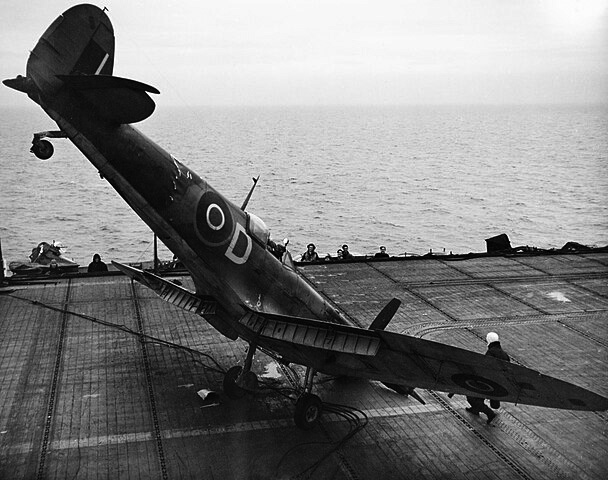 Seafire nosing over on the flight deck of HMS Smiter landing accident 1944
Seafire nosing over on the flight deck of HMS Smiter landing accident 1944
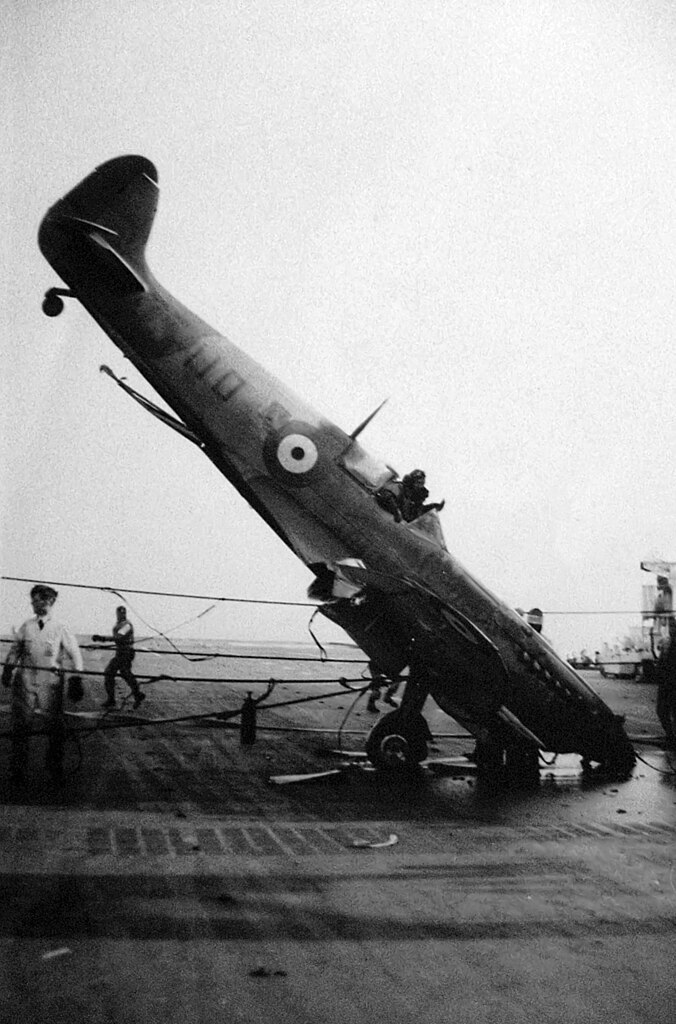 Crash on Illustrious
Crash on Illustrious
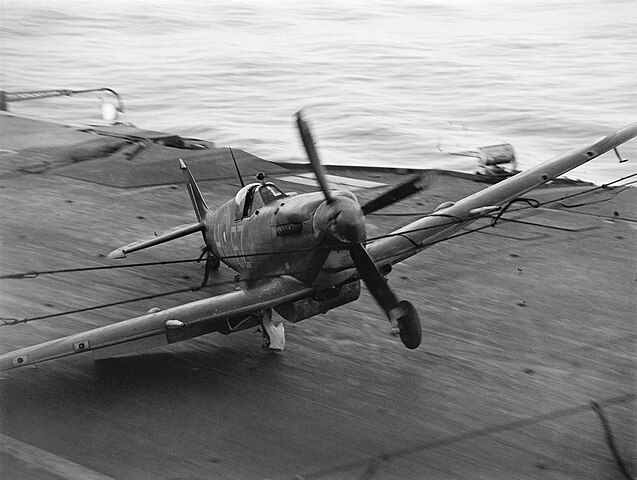 Seafire hits the barrier on HMS INDEFATIGABLE after raid Pangkalan, Brandan Sumatra 1 April 1945
Seafire hits the barrier on HMS INDEFATIGABLE after raid Pangkalan, Brandan Sumatra 1 April 1945
The Korean War
The Seafire went on with better versions like the Mark 17 and 48 among others, “super seafire”, powered with the new Griffon negine with quad blade propellers or even contra-rotating ones. Thus, it was still the standard Royal Navy Fighter during the Korean War, performing hundreds of sorties both in ground attack or combat air patrol in 1950. But its started to be withdrawn from service at the end of this war. The short-lived Supermarine Seafang, a development of the Spiteful, was its designed successor, but the Sea Fury seemed more promising. The Type 382 Seafang F.31 had a 2,375 hp Griffon 61 engine and five-bladed constant-speed Rotol airscrew but on 150 ordered only 9 were delived until the rest were cancelled. The Type 396 Seafang F.32 only had two prototypes built with a 2,350 hp (1,752 kW) Griffon 89 engine and received more navalized options like folding wings, increased fuel capacity and dual contra-rotating 3-bladed propellers. But it was declined for production. Instead the FAA wanted a standardized unique model.
Thus, the Seafire was replaced already from 1947 by the Hawker Sea Fury, last piston engine fighter, and soon the first generation of jet-propelled naval fighters: De Havilland Vampire, Supermarine Attacker, and Hawker Sea Hawk.
Other Operators
France
After Britain, France was the largest user of the Seafire. Just at the end of World War II, Britain ceded to France the aircraft carriers H.M.S. Biter (future Dixmude) and Colossus (future Arromanches) and wit them, 50 Seafire Mk.IIIs were acquired, 48 delivered in February 1946, then 65 declared obsolete, 35 intended to be scrapped. More were recovered, reconditioned for cannibalized parts. The 1st Fighter Flotilla (1FC, 11.F) recreated in Cuers on January 10, 1945 (1F on January 1, 1946) was equipped with SBD Dauntless until obtaining its first Seafire III after training at Lee-on-Solent NAS late March, just as 20 Spitfire IXs were obtained for pilot training in April. 1F had 12 Seafire Mk.IIIs, 6 Spitfire IXs in late 1945.
The first seafire landing on FS Arromanches took place in November 1946 and by 1947, the flotilla had 24 Seafired III when dispatched in Indochina by late 1948. Flotilla 12.F (AC2) was recreated in Hyères by August 1, 1948 under LV Sanguinetti to train 18 Seafire Mk.III, then 16 by December and 11 by 1949 due to training attrition and poor condition, lack of spare parts: The two flotillas cumulated 32 accidents between themselves.
In June 1949 this was too much for the French admiralty that struck all Mk.IIIs. They were prohibited from landing on Arromanches after a Commission of Inquiry, and then stuck in Hyères. To participate to NATO’s “Verity” exercises, 15 Seafire Mk.XVs were ordered and delivered on June 17, 24 and 28, 1949 for flotille 1.F and 12.F (6 Mk.XV and 6 Mk.II each), training. The Mk.XVs were prohibited from landing also by March 13, 1950 and they served until 1951 (last destroyed). F6-F Hellcats arrived in August 1950. In Total the aéronavale operated 179 Mk. III and 15 Mk.XV equipping in addition 10.S, 11.S, 54.S squadrons and Rochefort School.
Canada
Late type postwar only: 803 Naval Air Squadron in 1946-1948 and 883 Naval Air Squadron 1946-1948, from HCMS Warrior and from land. In December 1945 indeed, Canada created the RCN air branch and four Canadian Fleet Air Arm squadrons, later gathered into two Carrier Air Groups (CAG): Former FAA 803 and 883 Squadrons in 1946 and by 1947 803/825 Squadrons 883/826 Squadrons some swapping on the Sea Fur. 883 Sqn retained them until 1948.
Ireland
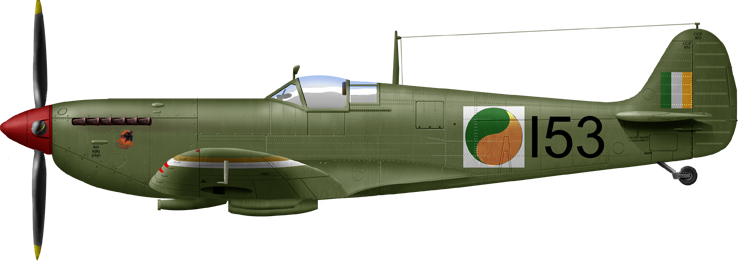 Irish Seafire Mk IIIc
Irish Seafire Mk IIIc
Postwar, the Irish Air Corps obtained also the seafire. It was 1947, and 12 Mark IIIc were sold, stripped of their naval equipment, fitted with the short barrel Hispano Mk. V cannons. Most were retired by 1949 but one, by June 1954. They served with 146. 1 (Fighter) Squadron at Aer Chor nah-Eirann with the Irish Air Corps base at Gormanston.
Burma
 Burmese AF Seafire Mk XV
Burmese AF Seafire Mk XV
Former 20 Mark XV seafires were obtained and de-navalized in 1950 to serve alongside Spitfires. These were ex-Canadian 883 Sqn. It seems these Mk.XV were paint scrapped, kept in metal livery with a red propeller hub, large “UB-” identifiers and small orange-white-black tail flag and triangular fuselage symbol. In the 1950s they were allocated to No. 1 Squadron of the Burmese Air Force and used in combat in Counter Insurgency (COIN) operations in northern Burma after months of test flights and training. After intensive service in northern Burma. They operated by 1954 from Mingaladon AB, Yangon. They were retired in 1957/58, replaced by the Hawker Sea Fury FB.11. A single one, UB-409 is now kept in pristine conditions at the Defence Services Museum in Nay Pyi Taw, central Myanmar. A fake capital famous for its… 16 lane highways.
Surviving Seafires
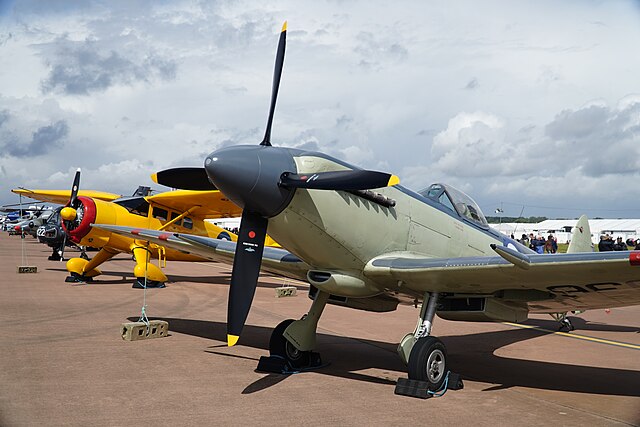
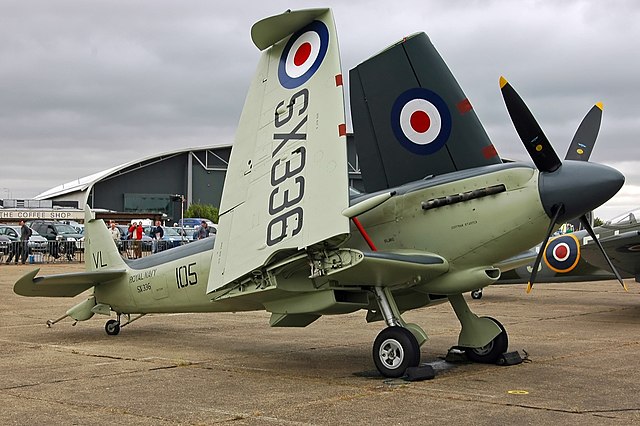
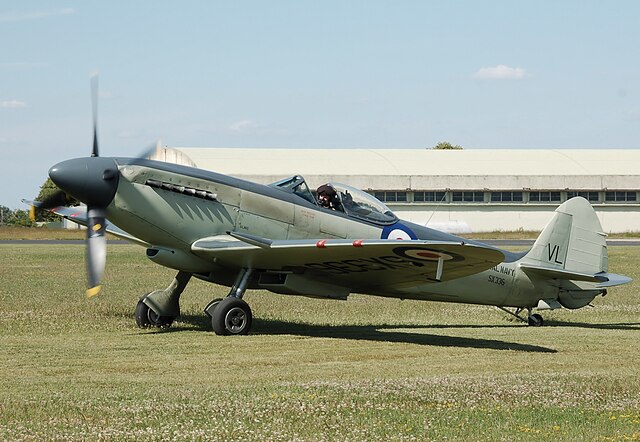
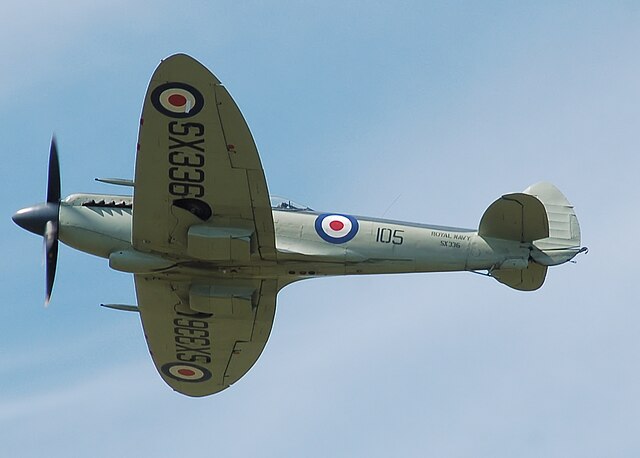
Seafire 105 SX335 at Royal Intl. Air Tattoo and Cotsworld Air Show, 2010
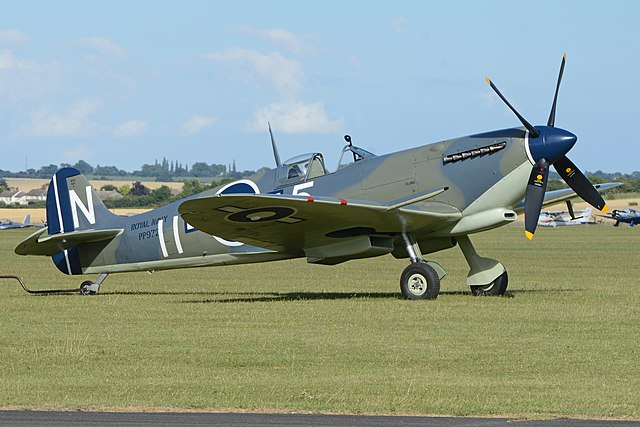
Airworthy Sup. Seafire LF IIIc
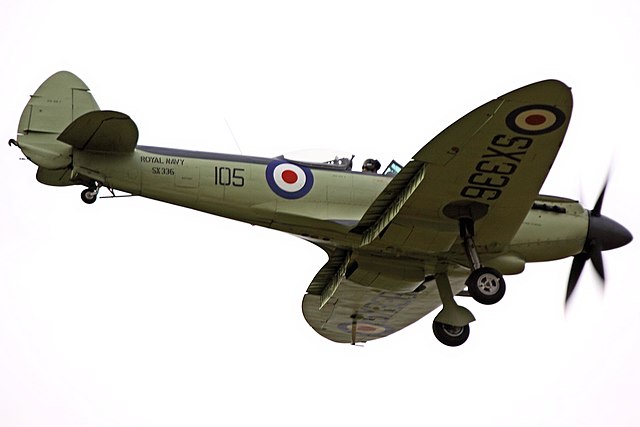
Duxford 2010
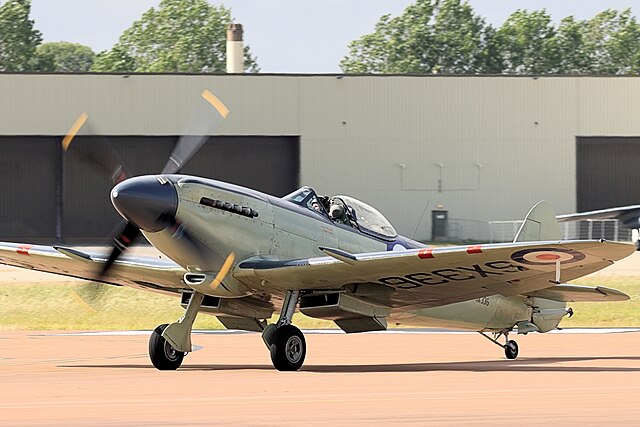
Seafire in an Airshow
With that many of these deployed on all fronts during the war, many survived, preserved, purchased back by collectioners.
Australia has a F Mk XV SW800 (VH-CIH) in storage at Adelaide, recovered from Brownhills scrapyard in 1991, shipped to Melbourne for restoration, not yet displayed;
Myanmar (Burma) had a Seafire F Mk XV PR376/UB409 on external display at the Defence Services Museum in Naypyidaw.
British ones are split between airworthy models, such as the rare Seafire LF IIIc PP972 (G-BUAR) from Air Leasing Ltd, ex 809 Sqn, then Aeronavale, 12F.2 (later 1F.9), purchased by a private individual in 1970, static display in 1982 at Resistance Museum at St Marcel, restored to airworthiness in 1988, acquired by Air Leasing in 2012, completed 2015.
There is also the Seafire F Mk XVII SX336 (G-KASX) from Tim J. Manna, Cranfield made by Westland in 1946, scrapped in 1955, recovered in the 1970s as bare fuselage by Peter Arnold and ended at Tim Manna restoration workshop until 2006, making its maiden flight.
Static, is the Seafire F Mk XVII SX137 at the Fleet Air Arm Museum in Yeovilton.
In the US there are two static Seafires, one Mk.XVc PR503 (N503PR) from Wes Strickler, Columbia, MO, Restored by Jim Collins and a FR Mk 47 VP441 (N47SF) by Jim Smith, private collection at Stonehenge Air Museum in Montana, restored by Ezell Aviation.
Canada could display the no longer airworthy F MkXVc PR451 at the Military Museum Calgary, Alberta.
Read More
Books
Admiralty. Pilot’s Notes for Seafire 45 & 46:Mark 45, Griffon 61 Engine, Mark 46–Griffon 87 Engine. Minister of Supply, 1948.
Aloni, Shlomo & Arnold, Peter R. (January–February 1999). “From Israel to Burma: Operation Orez, Supplying and Ferrying Spitfires II, Air Enthusiast
Andrews, C.F. and E.B. Morgan. Supermarine Aircraft since 1914. London: Putnam 1987.
Arnold, Peter R. (January–February 1999). “Triple Twins: Tracking Down the ‘Real’ Spitfire UB 425”. Air Enthusiast
Bachelor, Len. Supermarine Seafires (Merlins). Windsor, Berkshire, UK: Profile Publications Ltd., 1971.
Brown, David. The Seafire: The Spitfire That Went to Sea. London: Greenhill Books, 1989
Brown, Eric. “Spitfires with Sea-Legs”. Air International, September 1978, Vol 15
Brown, Eric. “Spitfires with Sea-Legs: Part Two.” Air International, October 1978, Vol 15
Brown, Eric. Wings of the Navy. London: Pilot Press Limited, 1980.
Bussy, Geoffrey. Supermarine Seafire, Griffon-engined variants – Mks.F.XV, F.XVII, F.45, F.46 and FR.47, Warpaint series No.20
Buttler, Tony. British Secret Projects: Fighters and Bombers 1935–1950. Midland Publishing, 2004.
Ellis, Ken (2008). Wrecks and Relics. Manchester: Crecy Publishing.
Freeman. Jon. Supermarine Seafire Mk.Ib – Mk.47. Wantage, Oxfordshire, UK: The Aviation Workshop Publications Ltd., 2004.
Morgan, Eric B. and Edward Shacklady. Spitfire: The History. Stamford: Key Books Ltd, 2000.
Price, Alfred. “Supermarine Spitfire (Griffon-engined variants and Seafire)” Wings of Fame, Volume 16, 1999
Quill, Jeffrey. “Spitfire: a Test Pilot’s Story”. 1996, reprinted 1998, 2001, 2005, 2008, pp. 270–281. Crecy Publishing Ltd.
Robertson, Bruce. Spitfire: The Story of a Famous Fighter. Hemel Hempstead, Hertfordshire, UK: Model & Allied Publications Ltd., 1960
Sturtivant, Ray and Theo Balance. The Squadrons of the Fleet Air Arm. Tonbridge, Kent, UK: Air-Britain (Historians) Ltd., 2nd revised edition, 1994.
on casematepublishers.com: fleet-air-arm-legends-supermarine-seafire/
Links
armouredcarriers.com, seafire variants
baesystems.com vickers-supermarine-seafire
ffaa.net seafire_fr.htm
en.wikipedia.org Supermarine_Seafire
classicwarbirds.co.uk/
simpleflying.com supermarine-seafire-history
salute.org Seafire.html
militaryfactory.com/
navywings.org.uk/ seafire-sx336/
key.aero/ seafire
reviews.ipmsusa.org/ seafire-mkiii
aviastar.org/ _seafire.php
historyofwar.org/ seafire.html
http://www.historyofwar.org/articles/weapons_supermarine_seafire_III.html
historyofwar.org/ seafire_XV.html
historyofwar.org/ seafire_XVII.html
historyofwar.org seafire_46.html
historyofwar.org/ seafire_47.html
classicwarbirds.co.uk spitfire-floatplane.php
commons.wikimedia.org
web.archive.org spitfires.ukf.net
1000aircraftphotos.com HoweSteven coll
allenaircraftresprays.co.uk Seafire.htm
web.archive.org/ happyorange.org.uk/ seafire-take-off/
warbirdregistry.org/ /spitregistry.html
commons.wikimedia.org Supermarine_Seafire
Books
Admiralty. Pilot’s Notes for Seafire 45 & 46:Mark 45 Griffon 61 Engine; Mark 46 Griffon 87 Engine Minister of Supply 1948.
Aloni, Shlomo & Arnold, Peter R. (January–February 1999). From Israel to Burma Operation Orez, Ferrying Spitfires II
Andrews, C.F. and E.B. Morgan. Supermarine Aircraft since 1914. Putnam, 1987
Arnold, Peter R. (January–February 1999). Triple Twins: Tracking Down the ‘Real’ Spitfire UB 425 Air Enthusiast
Bachelor, Len. Supermarine Seafires (Merlins). Windsor, Berkshire, Profile Publications Ltd. 1971.
Brown, David. The Seafire: The Spitfire That Went to Sea. Greenhill Books 1989
Brown, Eric. “Spitfires with Sea-Legs”. Air International, September 1978
Brown, Eric. “Spitfires with Sea-Legs: Part Two.” Air International 1978
Brown, Eric. Wings of the Navy. London: Pilot Press Limited, 1980.
Bussy, Geoffrey. Supermarine Seafire, Griffon-engined variants – Mks.F.XV, F.XVII, F.45, F.46 and FR.47 Milton Keynes, Buckinghamshire, Hall Park Books Ltd. 1999
Buttler, Tony. British Secret Projects: Fighters and Bombers 1935–1950. Midland Publishing 2004.
Ellis, Ken (2008). Wrecks and Relics. Manchester: Crecy Publishing.
Freeman. Jon. Supermarine Seafire Mk.Ib – Mk.47. Wantage, Oxfordshire, Aviation Workshop Publications Ltd 2004
Price, Alfred. “Supermarine Spitfire (Griffon-engined variants and Seafire)” Wings of Fame, Volume 16 1999
Sturtivant, Ray and Theo Balance. The Squadrons of the Fleet Air Arm. Tonbridge, 1994
Sturtivant, Ray and Mick Burrow. Fleet Air Arm Aircraft 1939 to 1945. Tonbridge, Kent 1995.
Videos
The Supermarine Seafire – Second Time’s a Charm! – Drachinifel
Model Kits
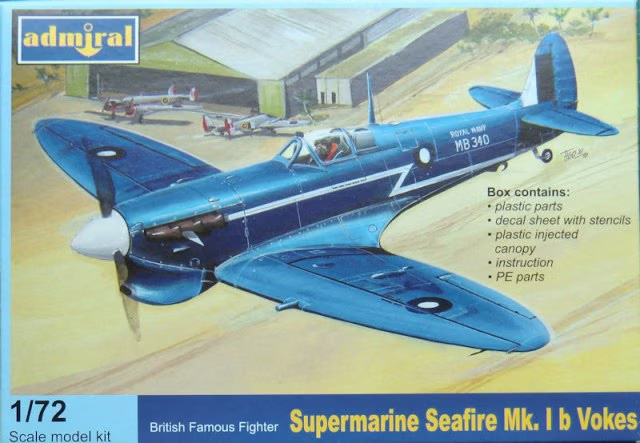
seafire general query on scalemates.com
The subject of the spitfire is immensely popular. It was in 1950, it is still today, and all versions had been portayed in any scale. However the seafire is rather a niche subject, and still quite popular still, all versions were covered, and six scales.
Let’s cite the Airfix 1:72, reference kit (who else ?), Revell 1:32, Airfix/Casadio/Falcon/Grand Phoenix/Hasegawa/Hobbycraft/Special Hobby 1:48, scores of 1/72 starting with the old admiral kit (picture), CMR (tons), Freightdog Models, Heritage Aviation Models, JAYS Model Kits, Kitbits, Kovozávody Prostějov, Legato, Octopus, Pegasus, RarePlanes, Special Hobby, and many others, like High Planes models, a book (Kits at War 1:48), many decal publishers.
Gallery
Illustrations
Mark I
 Seafire MkIb, 736NAS, FAA St Marryn, 1943
Seafire MkIb, 736NAS, FAA St Marryn, 1943
 Seafire FMk1b, 885 NS, HMS Formidable fb43
Seafire FMk1b, 885 NS, HMS Formidable fb43
Mark II
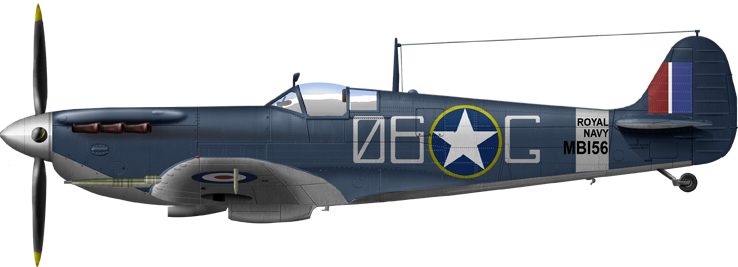 Seafire Mark IIc, 801/807 Sqn. HMS Furious, Op. Torch Nov.1942
Seafire Mark IIc, 801/807 Sqn. HMS Furious, Op. Torch Nov.1942
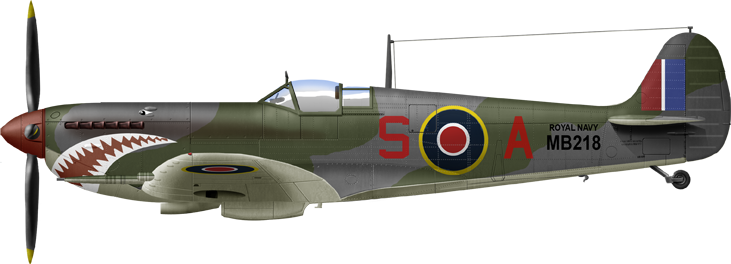 Seafire Mark.IILNc 809 NAS, HMS Unicorn, Salerno 1943
Seafire Mark.IILNc 809 NAS, HMS Unicorn, Salerno 1943
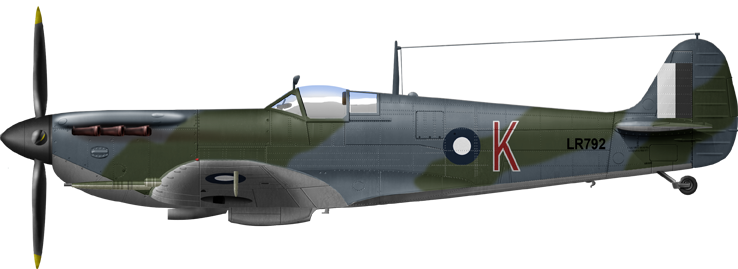 MkIIc, 834 NAS, HMS Battler, BPF, June 1944
MkIIc, 834 NAS, HMS Battler, BPF, June 1944
Mark III
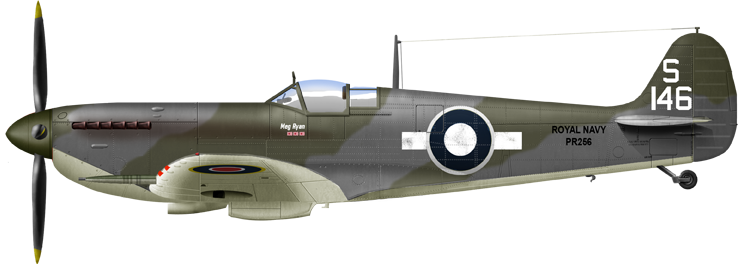 Seafire LIII, 894 NAS, HMS Indefatigable BPF, Sakishima Gunto May 1945
Seafire LIII, 894 NAS, HMS Indefatigable BPF, Sakishima Gunto May 1945
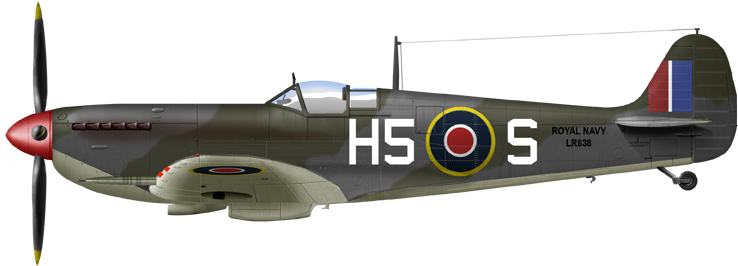 Seafire III 887 NAS, HMS Implacable, October 1944/761 NAS, USS Ravager, May 1946
Seafire III 887 NAS, HMS Implacable, October 1944/761 NAS, USS Ravager, May 1946
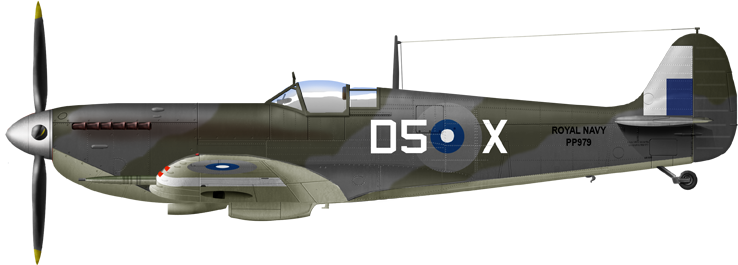 Seafire III, 807 NAS, HMS Hunter, BEIF Andaman, May 1945
Seafire III, 807 NAS, HMS Hunter, BEIF Andaman, May 1945
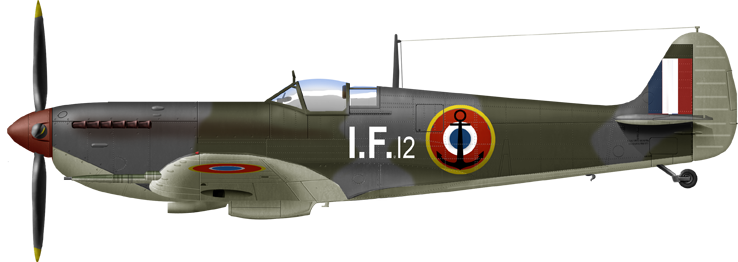 Seafire LIII Flotille 1F, Arromanches, Gulf Tonkin December 1948
Seafire LIII Flotille 1F, Arromanches, Gulf Tonkin December 1948
Mark 15
 Seafire XV 806 NAS, HMS Glory 16th Carrier Carrier Group, Australia September 1946
Seafire XV 806 NAS, HMS Glory 16th Carrier Carrier Group, Australia September 1946
 Seafire XV NAS Hal Far, Malta August 1946
Seafire XV NAS Hal Far, Malta August 1946
 Seafire XV 802 HMS Vengeance, Far East Fleet 1947
Seafire XV 802 HMS Vengeance, Far East Fleet 1947
 Seafire XV 54S Flotille, Hyeres June 1950
Seafire XV 54S Flotille, Hyeres June 1950
 Seafire XV early type, 883 Sqn. RCNAS Dartmouth summer 1949
Seafire XV early type, 883 Sqn. RCNAS Dartmouth summer 1949
Mark 17
 Supermarine Seafire Mark XVII, 766 Sqn, Culham 1946
Supermarine Seafire Mark XVII, 766 Sqn, Culham 1946
 Seafire Mark XVII, 767 NAS Deck Landing Control Officer Training Unit, 50th Training Group RNAS Yeovilton 1950
Seafire Mark XVII, 767 NAS Deck Landing Control Officer Training Unit, 50th Training Group RNAS Yeovilton 1950
 Seafire Mark XVII, 741 NAS Operational Flight Training Unit, Advanced Warfare School, RNAS St Merryn 1947
Seafire Mark XVII, 741 NAS Operational Flight Training Unit, Advanced Warfare School, RNAS St Merryn 1947
 Seafire Mark XVII, 736 Sqn. HMAS Sydney 1949
Seafire Mark XVII, 736 Sqn. HMAS Sydney 1949
 Seafire Mark XVII, 1832 Sqn. RNVR Culham 1950
Seafire Mark XVII, 1832 Sqn. RNVR Culham 1950
Mark 45
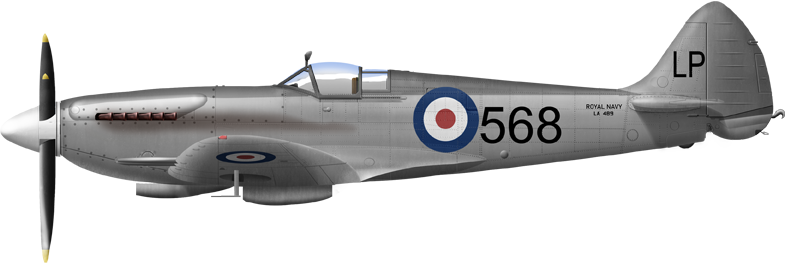 Seafire Mk45, 771 NAS Lee-on-Solent, Summer 1949
Seafire Mk45, 771 NAS Lee-on-Solent, Summer 1949
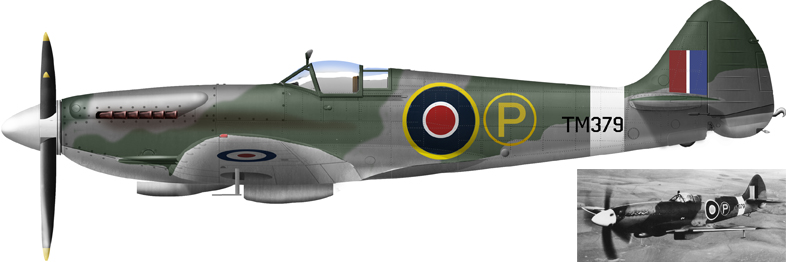
Capt. Eric (“Winkle”) Brown’s Seafire Mark 45 TM379, on trials carrier HMS Pretoria Castle, July 1945. The Seafire Mark 45 was the last wartime evolution of the famous type. It had the new Rotol contra prop, modified fin, rudder and tail hook.
Mark 46

Seafire F Mk.46, 778 Sqn. FAA, RNAS Ford 1946
Mark 47
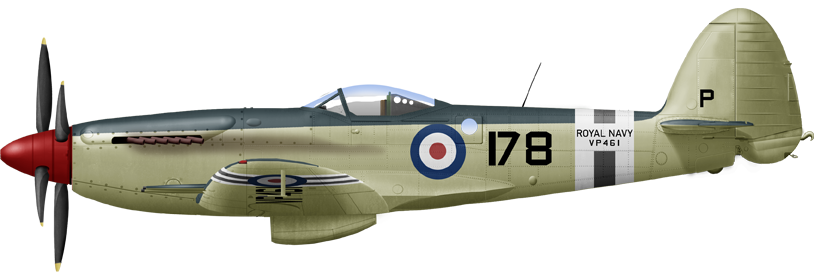
Seafire F Mk.47, 800 Sqn. FAA, HMS Triumph, Korea, mid-1950
A curiosity: Spitfire on floats
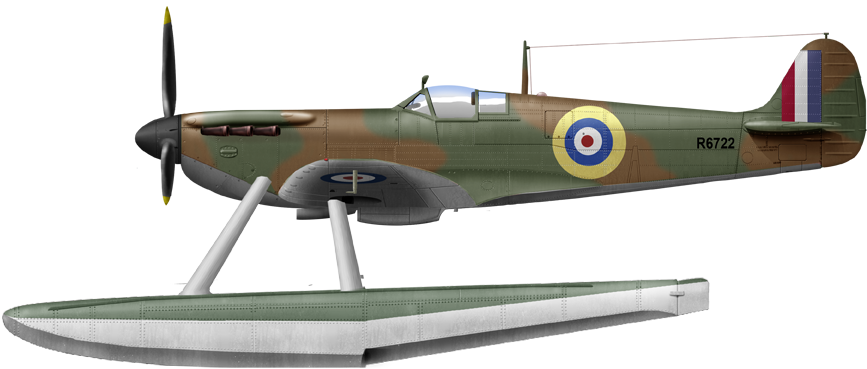 Spitfire Mk.I Hydro
Spitfire Mk.I Hydro
Aside carrier-based Spitfires, the admiralty, which lacked a proper fighter floarplane, looked at the Spitfire and wondered if it could be a viable concept. But it’s really after Norway was invaded in April 1940 that’s the idea of a fighter that can operate from fjords in Norway took shape and generated an official requirement. Frrom there, the Navy requested and obtained a Spitfire Mk I (R6772) for conversion, modified by Supermarinen, fitted with floats already tested in the floatplane version of the Blackburn Roc, adding for stability a ventral fin. However the war in Norway ended badly and trials proved disappointing, ending the tests. R6772 was restored as landplane and went on in her servce with the RAF (Battle of Britain, No. 222 Squadron, lost 18th September 1940, sgt. Ian Hutchinson surviving).
With the war breaking out with Japan in December 1941, a new theater of war appeared, more likely to see fighter floatplanes find a new justification. Folland Aircraft not occupied by massive orders as Supermarine or Hawker, was tasked to create a floatplane version of the Spitfire Mk VB; The prototype was immatrivulated W3760. Like the original it had a 1,100-hp Rolls-Royce Merlin 45, but a four blade propeller instead of the landplan version, top speed of 324 mph, range of 326 miles, 33,400 ft altitude. It had an extra ventral fin aft and a parachute to help recover from a spin. The floats were custom-made by Arthur Shirvall and measured 25ft x 7in. The man has been a celebrity, behind the Schneider Trophy winners.
Maiden flight was on 12th October 1942 (Jeffrey Quill) and were sucessful enough to order conversion of two more (EP751, EP754). But instead of the far east, they constituted together a small squadron, and were sent to the Dodecanese, South West Aegean Sea, to intercept German Ju-52 flying there. They were first landed in Egypt by October 1943 and then planned to be shipped to Kos and Leros Islands until the islands were captured by the Germans. Without purpose but defenbding the Suez canal the were truck on 28th January 1944.
But Folland also converted more recent Spitfires, a Mk IX (MJ892) this time intended for the Pacific. With its 1,720-hp Rolls-Royce Merlin for 377 mph (range 460 miles, ceiling 38,000 ft) it became the best performing floatplane of WW2, certainly better than the A6M2N Rufe, it’s Japanese nemesis. Maiden flight was on 18th June 1944 but situation changed as there were now enough carriers in completion. It never entered service, and the prototype was struck on 22nd November 1945.
Photos
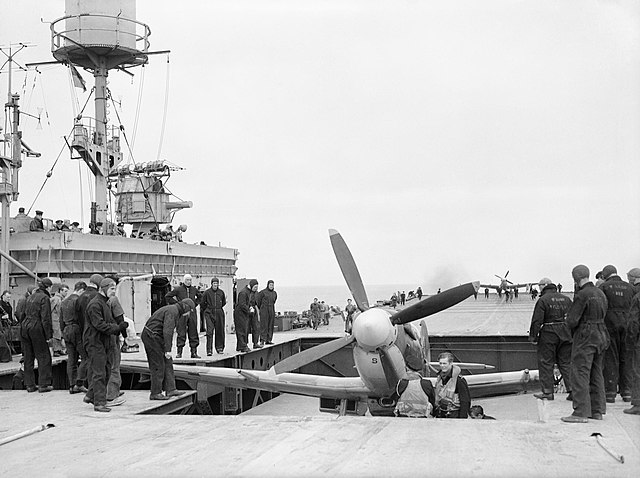 Seafire lifted flight deck HMS FURIOUS, August 1944
Seafire lifted flight deck HMS FURIOUS, August 1944
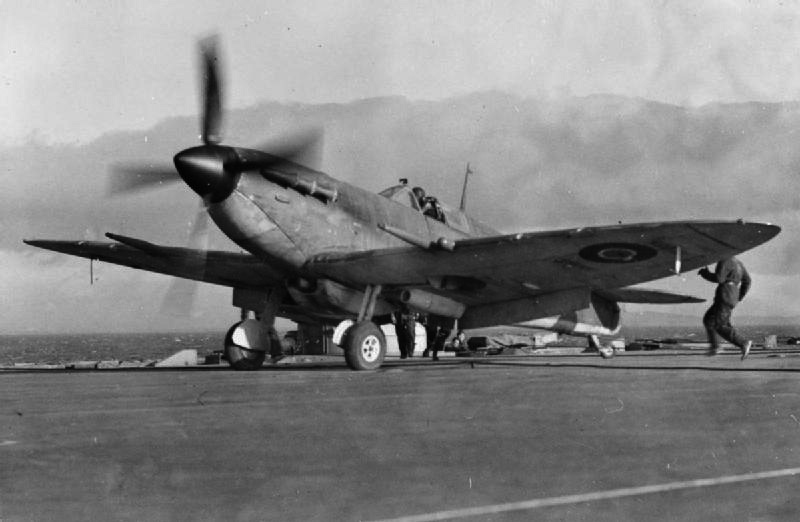 seafire landing HMS ILLUSTRIOUS Clyde
seafire landing HMS ILLUSTRIOUS Clyde
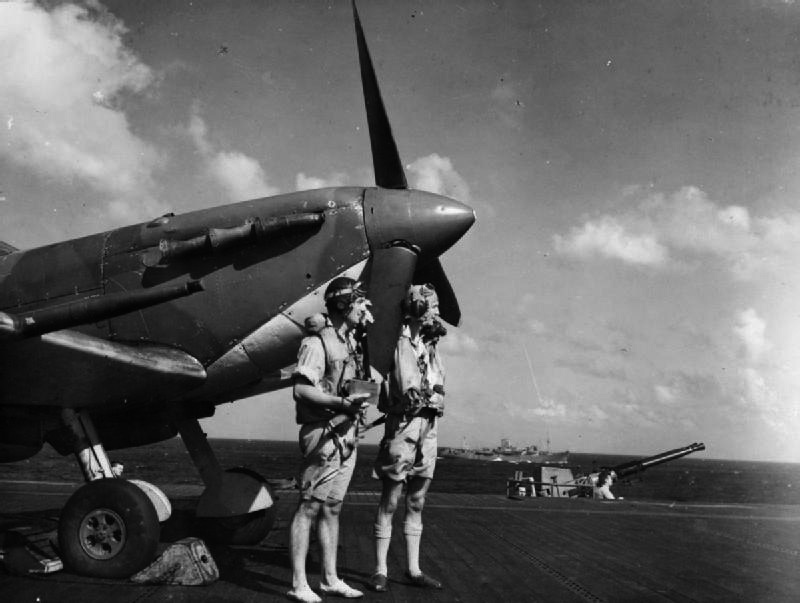 pilots 834 Sqn standing nose Seafire, HMS BATTLER, Greenock
pilots 834 Sqn standing nose Seafire, HMS BATTLER, Greenock
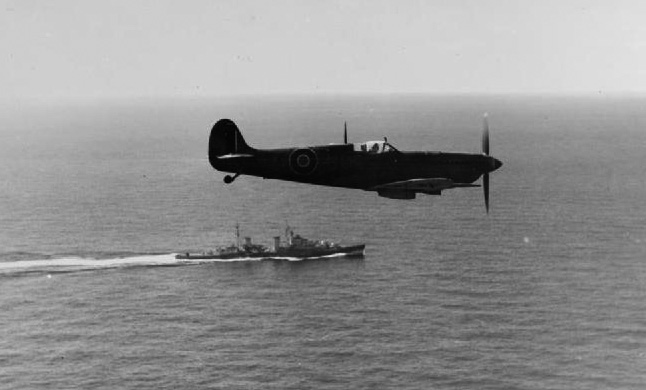 Seafire No 807 Sqn over HMS ROYALIST training NAS Dekhelia Egypt
Seafire No 807 Sqn over HMS ROYALIST training NAS Dekhelia Egypt
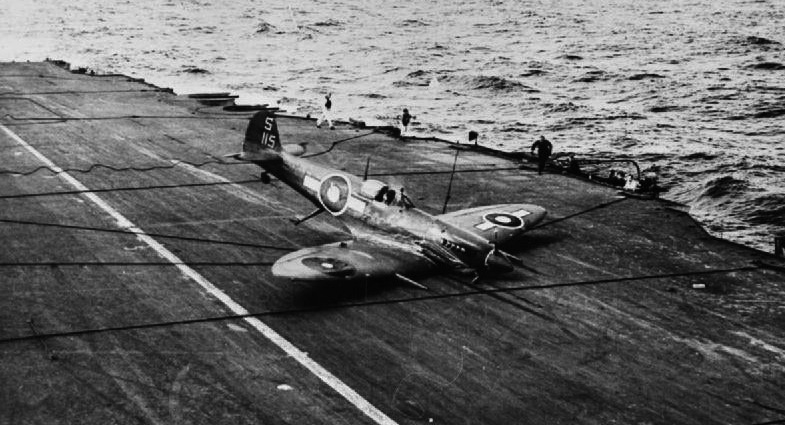 belly landing BPF Seafire broken undercarriage, HMS INDEFATIGABLE
belly landing BPF Seafire broken undercarriage, HMS INDEFATIGABLE
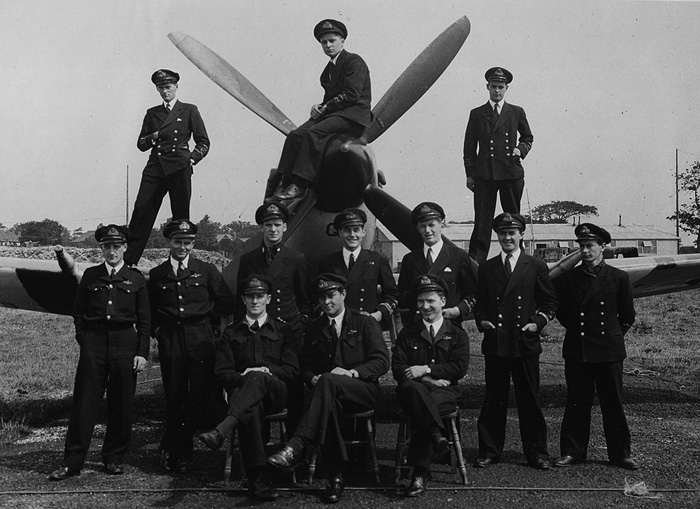 885 Naval Air Squadron, 1944
885 Naval Air Squadron, 1944
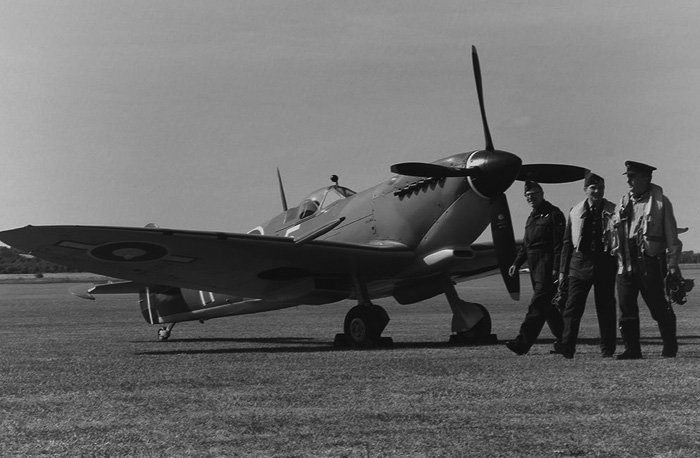 Supermarine 358 Seafire LFIII, duxford 2015
Supermarine 358 Seafire LFIII, duxford 2015
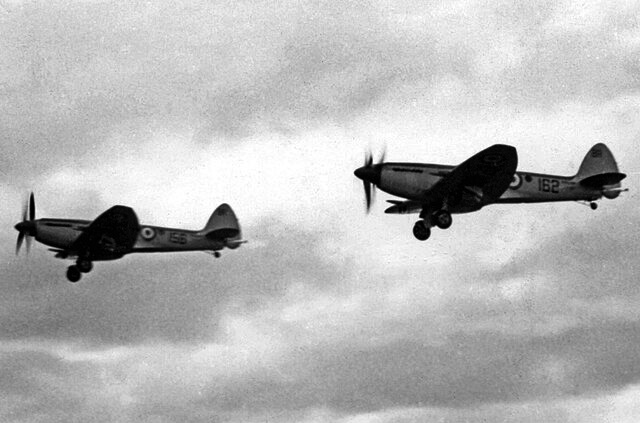 Seafire 47 1833 Sqn.
Seafire 47 1833 Sqn.
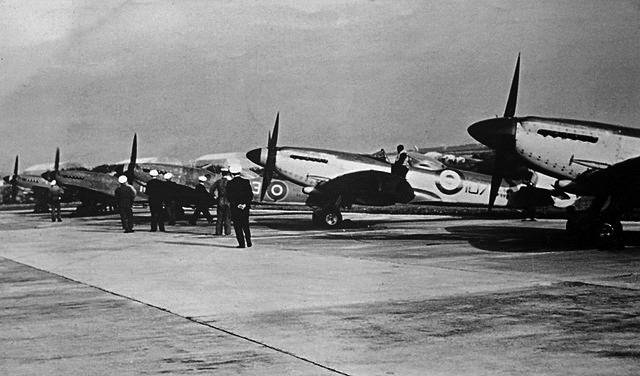 Supermarine Seafire F17 1950
Supermarine Seafire F17 1950
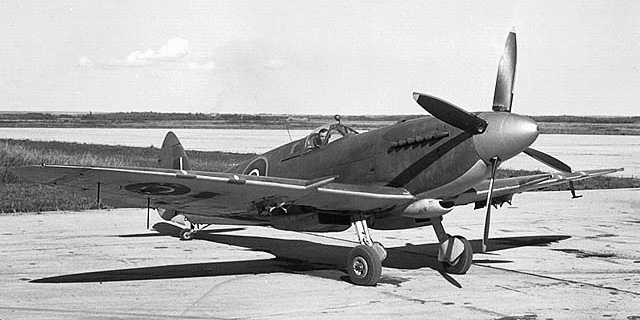
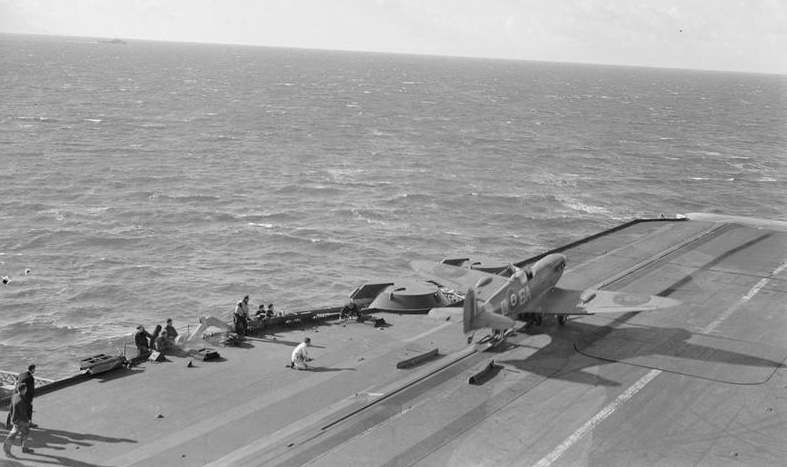 A Seafire Being Taking Off From the Booster on Board HMS Formidable Mediterranean December, 1942
A Seafire Being Taking Off From the Booster on Board HMS Formidable Mediterranean December, 1942
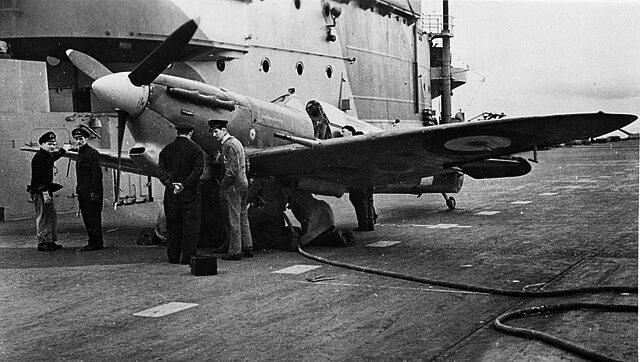 Mark 15 Spitfire, Unknown carrier
Mark 15 Spitfire, Unknown carrier
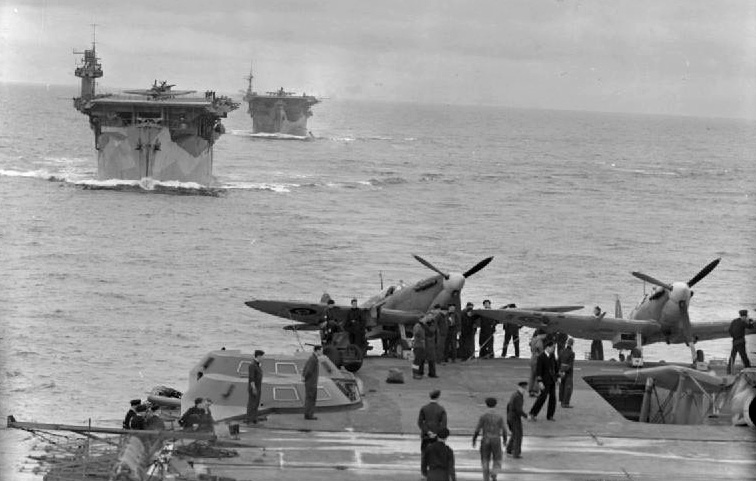 HMS Biter D97_and HMS Avenger D14 aft of HMS Victorious 38, 1942 seafires
HMS Biter D97_and HMS Avenger D14 aft of HMS Victorious 38, 1942 seafires
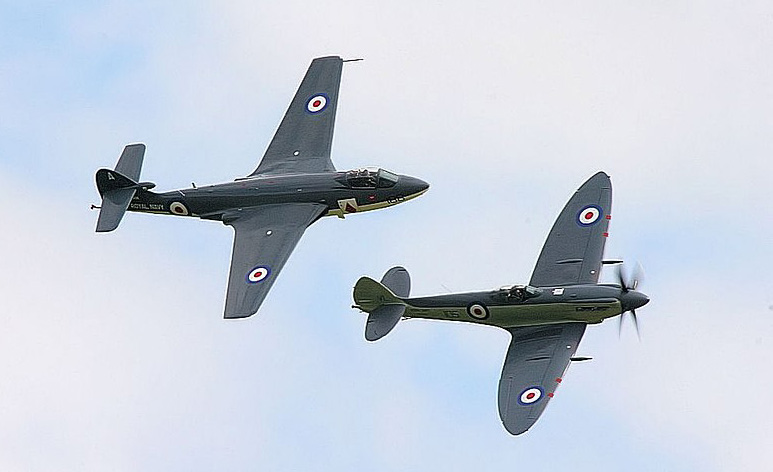 Seafire and Seahawk Duxford 2008
Seafire and Seahawk Duxford 2008
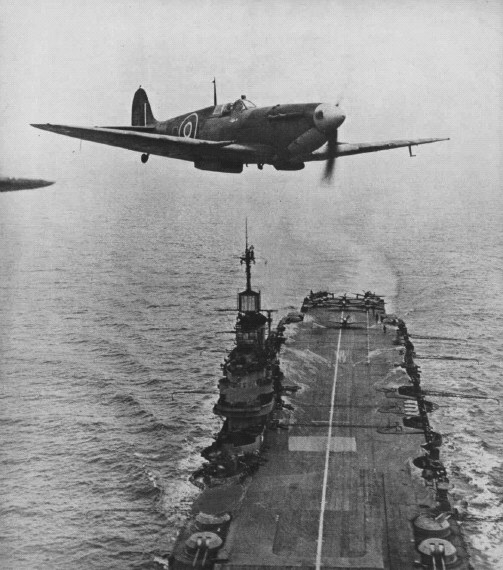 Seafire over Invincible class 1944
Seafire over Invincible class 1944
 Seafire Trials on HMS Illustrious 8 and 9 February 1943, Clyde
Seafire Trials on HMS Illustrious 8 and 9 February 1943, Clyde
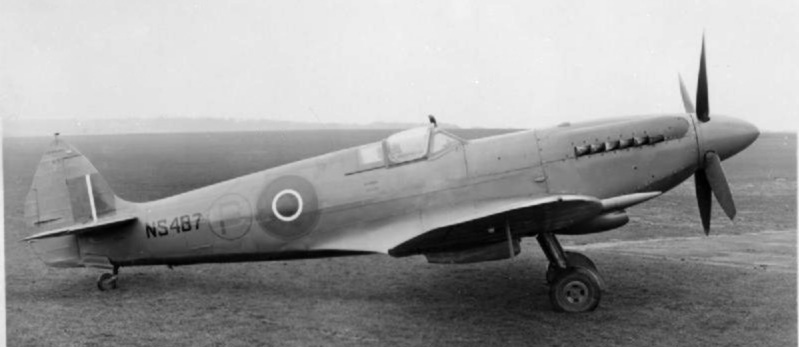 Supermarine Type 377 Seafire MkXV prototype
Supermarine Type 377 Seafire MkXV prototype
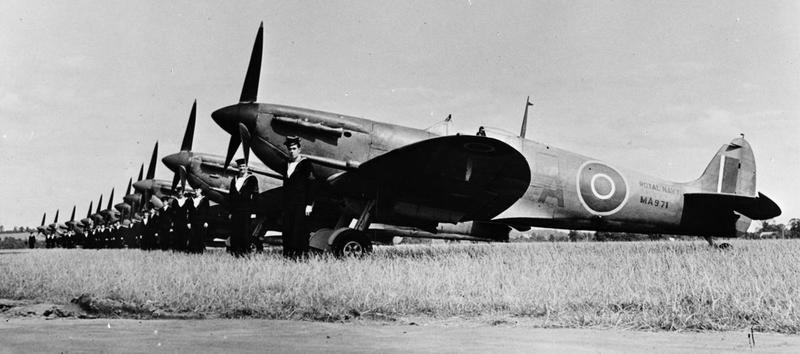 seafire sqn. 22 January 1943 Lee-on-solent, NAS
seafire sqn. 22 January 1943 Lee-on-solent, NAS
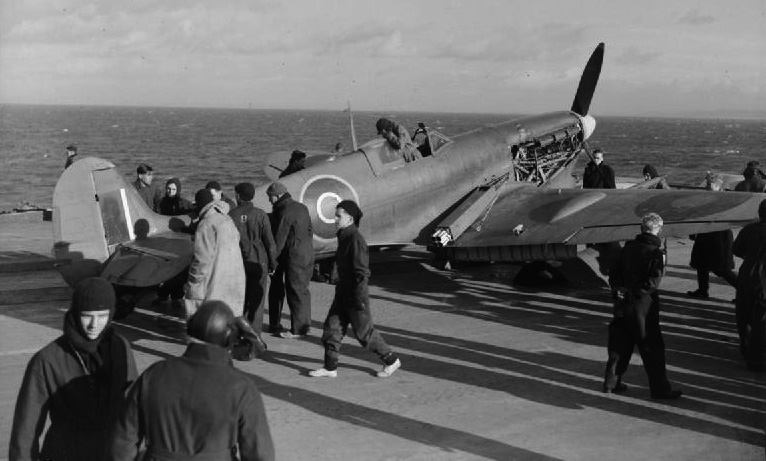 Seafire, RATOG trials HMS ILLUSTRIOUS Clyde
Seafire, RATOG trials HMS ILLUSTRIOUS Clyde
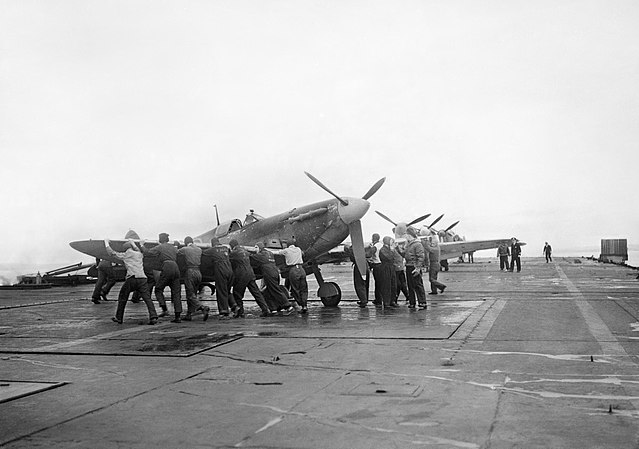 Supermarine Seafires aboard_HMS ARGUS off Lamlash Scotland August 1943
Supermarine Seafires aboard_HMS ARGUS off Lamlash Scotland August 1943
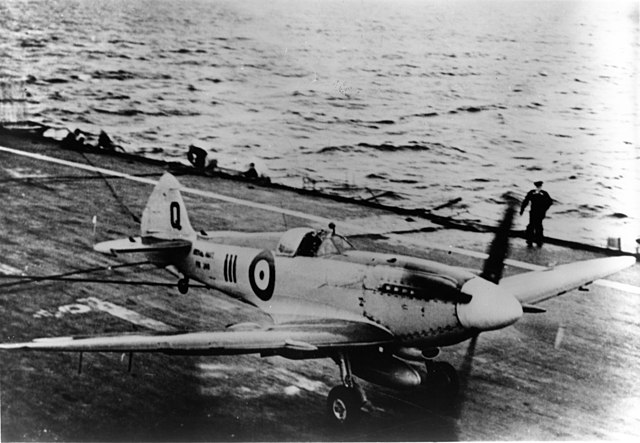 Supermarine Seafire Mk46 catching wire
Supermarine Seafire Mk46 catching wire
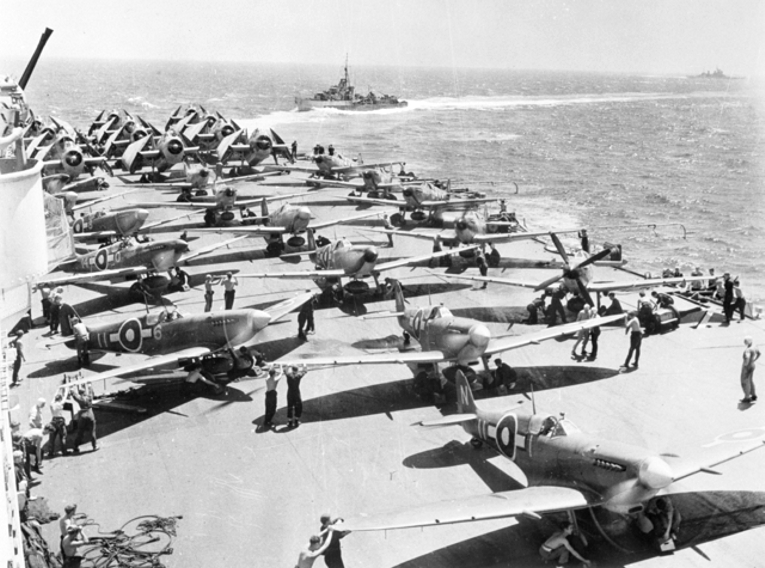 HMS Implacable seafires prepared TO AWM
HMS Implacable seafires prepared TO AWM
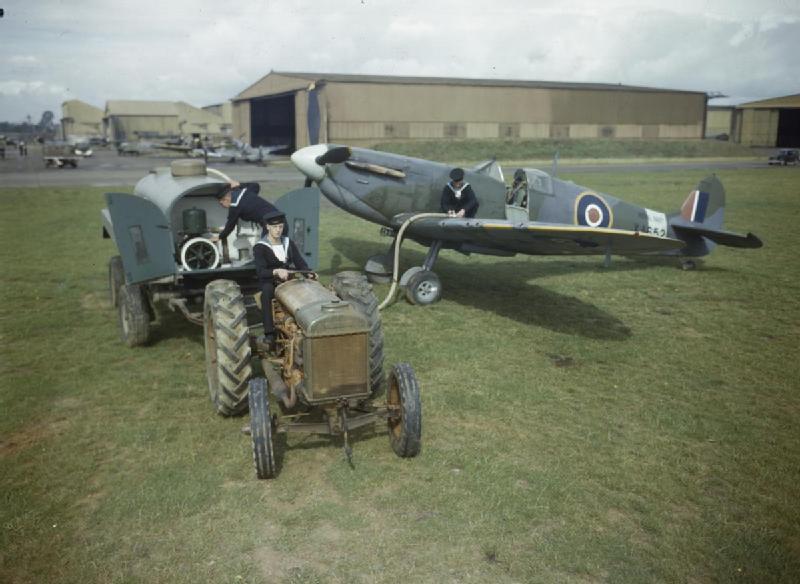 Ground Crew Working on Fleet Air Arm Aircraft at Rnas Yeovilton, September 1943
Ground Crew Working on Fleet Air Arm Aircraft at Rnas Yeovilton, September 1943
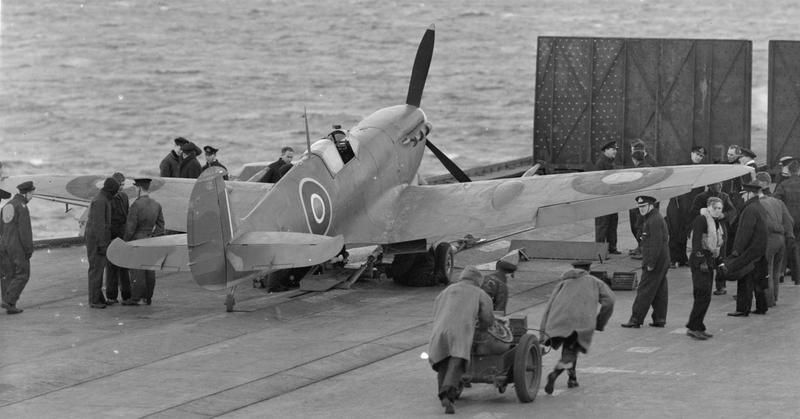 Fleet Air Arm Trial MS Victorious 23-25 September 1942
Fleet Air Arm Trial MS Victorious 23-25 September 1942

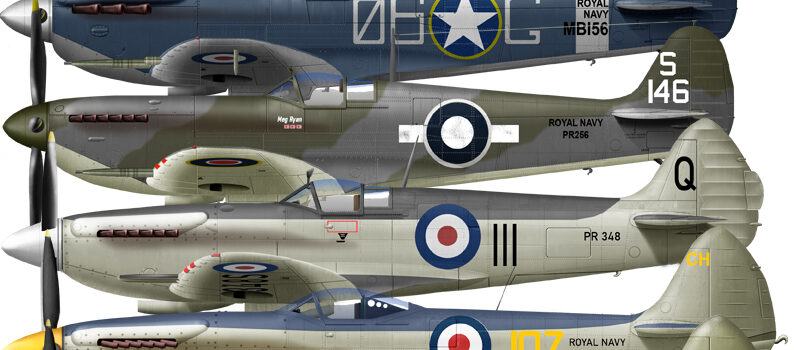
 Latest Facebook Entry -
Latest Facebook Entry -  X(Tweeter) Naval Encyclopedia's deck archive
X(Tweeter) Naval Encyclopedia's deck archive Instagram (@navalencyc)
Instagram (@navalencyc)





 French Navy
French Navy Royal Navy
Royal Navy Russian Navy
Russian Navy Armada Espanola
Armada Espanola Austrian Navy
Austrian Navy K.u.K. Kriegsmarine
K.u.K. Kriegsmarine Dansk Marine
Dansk Marine Nautiko Hellenon
Nautiko Hellenon Koninklije Marine 1870
Koninklije Marine 1870 Marinha do Brasil
Marinha do Brasil Osmanlı Donanması
Osmanlı Donanması Marina Do Peru
Marina Do Peru Marinha do Portugal
Marinha do Portugal Regia Marina 1870
Regia Marina 1870 Nihhon Kaigun 1870
Nihhon Kaigun 1870 Preußische Marine 1870
Preußische Marine 1870 Russkiy Flot 1870
Russkiy Flot 1870 Svenska marinen
Svenska marinen Søværnet
Søværnet Union Navy
Union Navy Confederate Navy
Confederate Navy Armada de Argentina
Armada de Argentina Imperial Chinese Navy
Imperial Chinese Navy Marinha do Portugal
Marinha do Portugal Mexico
Mexico Kaiserliche Marine
Kaiserliche Marine 1898 US Navy
1898 US Navy Sovietskiy Flot
Sovietskiy Flot Royal Canadian Navy
Royal Canadian Navy Royal Australian Navy
Royal Australian Navy RNZN Fleet
RNZN Fleet Chinese Navy 1937
Chinese Navy 1937 Kriegsmarine
Kriegsmarine Chilean Navy
Chilean Navy Danish Navy
Danish Navy Finnish Navy
Finnish Navy Hellenic Navy
Hellenic Navy Polish Navy
Polish Navy Romanian Navy
Romanian Navy Turkish Navy
Turkish Navy Royal Yugoslav Navy
Royal Yugoslav Navy Royal Thai Navy
Royal Thai Navy Minor Navies
Minor Navies Albania
Albania Austria
Austria Belgium
Belgium Columbia
Columbia Costa Rica
Costa Rica Cuba
Cuba Czechoslovakia
Czechoslovakia Dominican Republic
Dominican Republic Haiti
Haiti Hungary
Hungary Honduras
Honduras Estonia
Estonia Iceland
Iceland Eire
Eire Equador
Equador Iran
Iran Iraq
Iraq Latvia
Latvia Liberia
Liberia Lithuania
Lithuania Mandchukuo
Mandchukuo Morocco
Morocco Nicaragua
Nicaragua Persia
Persia San Salvador
San Salvador Sarawak
Sarawak Uruguay
Uruguay Venezuela
Venezuela Zanzibar
Zanzibar Warsaw Pact Navies
Warsaw Pact Navies Bulgaria
Bulgaria Hungary
Hungary

 Bundesmarine
Bundesmarine Dutch Navy
Dutch Navy Hellenic Navy
Hellenic Navy Marina Militare
Marina Militare Yugoslav Navy
Yugoslav Navy Chinese Navy
Chinese Navy Indian Navy
Indian Navy Indonesian Navy
Indonesian Navy JMSDF
JMSDF North Korean Navy
North Korean Navy Pakistani Navy
Pakistani Navy Philippines Navy
Philippines Navy ROKN
ROKN Rep. of Singapore Navy
Rep. of Singapore Navy Taiwanese Navy
Taiwanese Navy IDF Navy
IDF Navy Saudi Navy
Saudi Navy Royal New Zealand Navy
Royal New Zealand Navy Egyptian Navy
Egyptian Navy South African Navy
South African Navy






























 Ukrainian Navy
Ukrainian Navy dbodesign
dbodesign